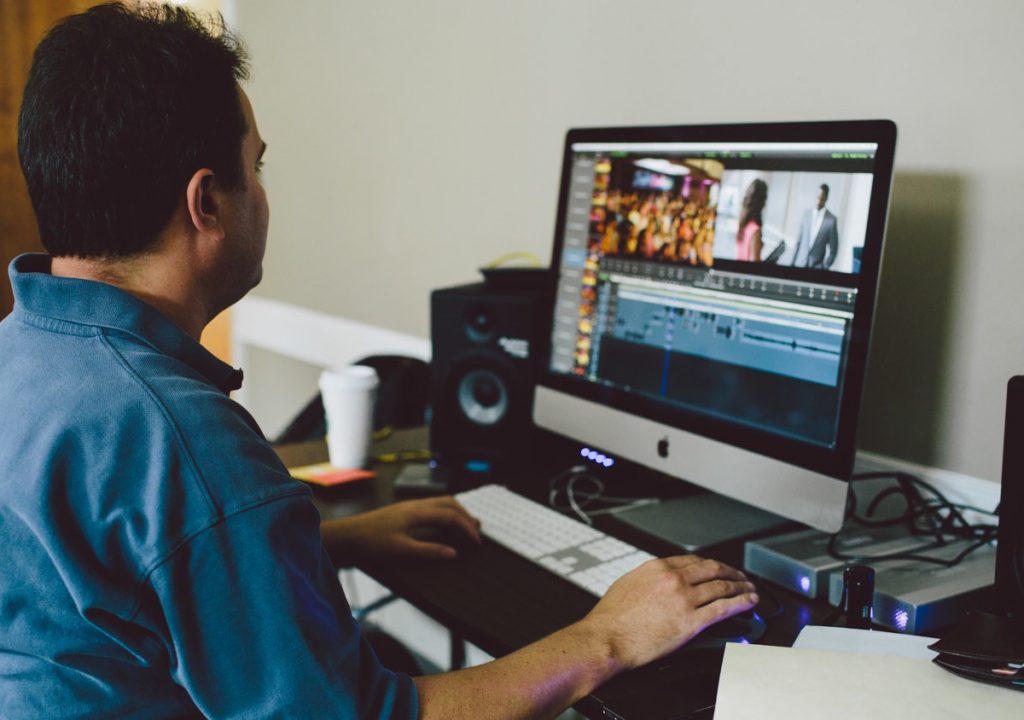Art of the Cut is taking you behind the scenes with three movies today, all cut in the last few years by Dan Zimmerman, A.C.E., including two movies from this fall; “Mazerunner: The Scorch Trials” and “My All American.”
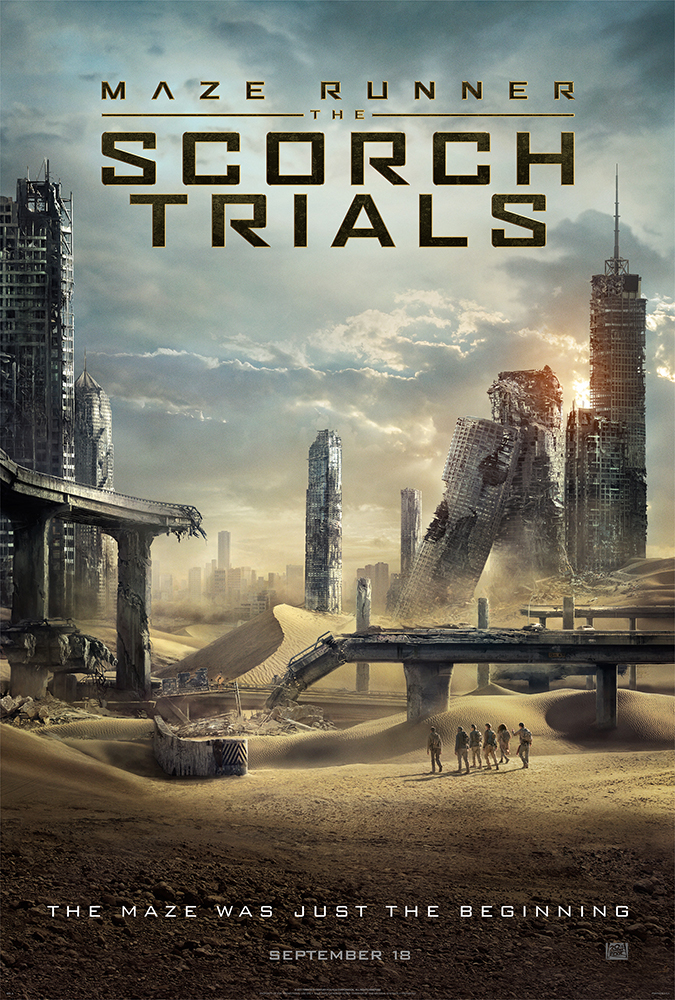 Art of the Cut is taking you behind the scenes with three movies today, all cut in the last few years by Dan Zimmerman, A.C.E. Zimmerman’s credits are quite impressive, starting with The Omen, directed by John Moore, released in 2006. Other credits include, Predators, Spy Kids: All the Time in the World in 4D with director, Robert Rodriguez, and a third movie with John Moore, A Good Day to Die Hard.
Art of the Cut is taking you behind the scenes with three movies today, all cut in the last few years by Dan Zimmerman, A.C.E. Zimmerman’s credits are quite impressive, starting with The Omen, directed by John Moore, released in 2006. Other credits include, Predators, Spy Kids: All the Time in the World in 4D with director, Robert Rodriguez, and a third movie with John Moore, A Good Day to Die Hard.
Most recently, Zimmerman edited “Mazerunner” and two movies from this fall, “Mazerunner: The Scorch Trials” and “My All American.”
Zimmerman’s career began under the tutelage of his father, editor Don Zimmerman, A.C.E., who cut such classics as “Rocky III,” “Rocky IV,” “Prince of Tides,” “Patch Adams,” “Night at the Museum” and “Men in Black 3.” Don’s currently working on the latest feature directed by Barry Sonnenfeld’s “Nine Lives.”
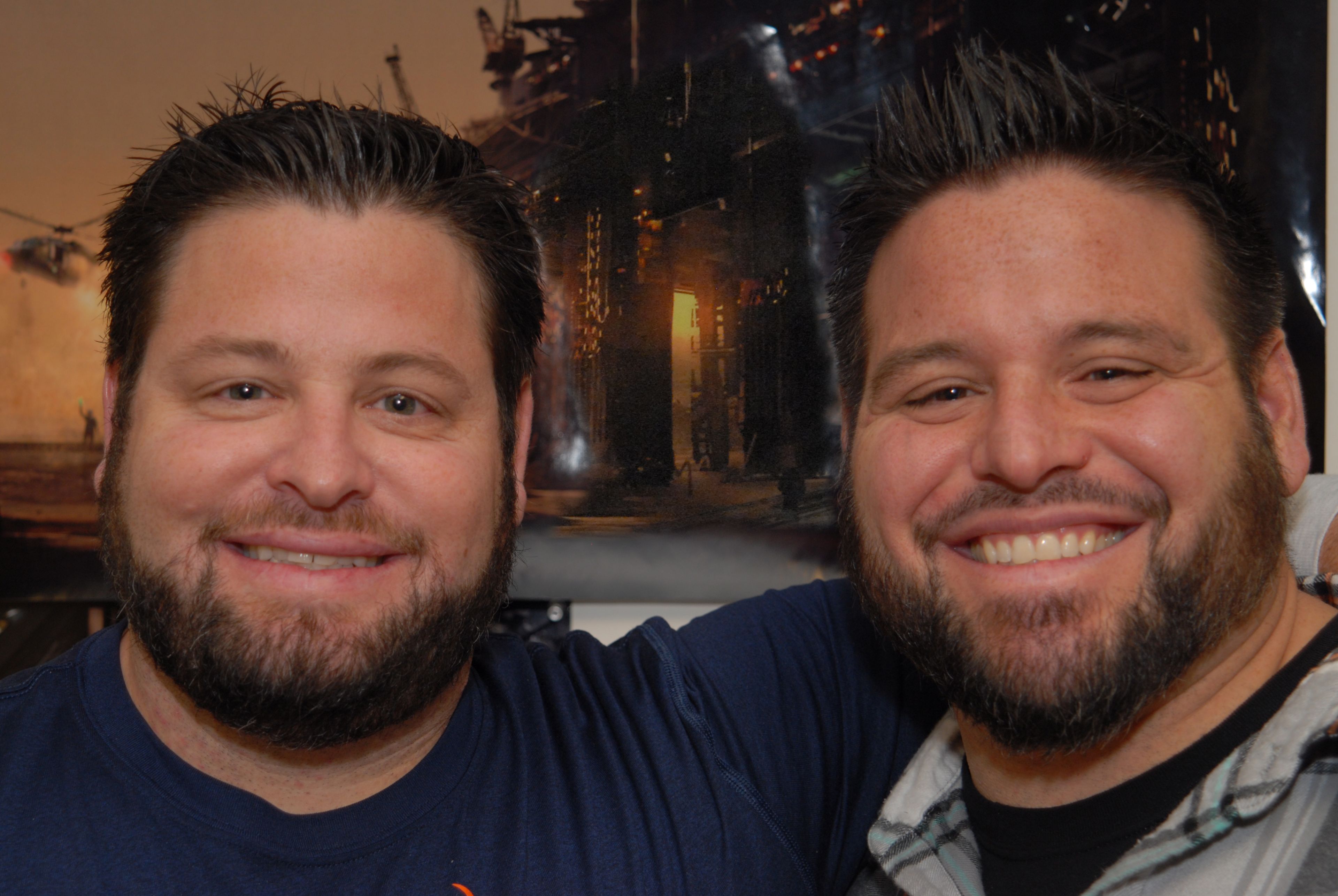 But make no mistake, Dan Zimmerman has made a name for himself as an editor. Dan (pictured right, on the left) has an identical twin brother, Dean, and younger brother David (pictured right, on the right) who are also editors, and together they’re on the way to making the Zimmerman name a dynasty in the edit suite.
But make no mistake, Dan Zimmerman has made a name for himself as an editor. Dan (pictured right, on the left) has an identical twin brother, Dean, and younger brother David (pictured right, on the right) who are also editors, and together they’re on the way to making the Zimmerman name a dynasty in the edit suite.
HULLFISH: Looking at your credits – which include an impressive list of action movies – I have to ask: Do editors get typecast?
ZIMMERMAN: I 100 percent agree with you. On paper, “My All American” is not the movie that I get hired for. I knew that going in to the interview with Angelo (Pizzo, the director) and Paul (Schiff, the producer). (photo, left to right: Post supervisor Jim Jenson, director Angelo Pizzo, and Zimmerman) But it was one of those situations where they had been courting another editor who chose to do another movie at the last minute and they had a very short window to find another person to edit the film. So someone contacted my agent and asked if I was available and knew that I’d played football. The fact that I’d also worked with Robert Rodriguez for a couple of years and had been to Austin and had found almost a second home there also played in to it. I read the script that morning and it literally moved me to tears. I called my agent back and said, “Get me on the phone with this guy or I’m getting on a plane and flying to Austin.”
HULLFISH: The crew was already in Austin?
ZIMMERMAN: Yes, they were only a week from shooting at the time. As I interviewed with Angelo and Paul my enthusiasm grew, as did my excitement level. Towards the middle of the conversation I found myself saying, “Guys, look, I know that you looked at my resume and saw comedies and action-adventure-horror. But I am telling you right now that if you do not hire me for this movie, you will be making a major mistake. I will not take no for an answer.” Typically in an interview, I’m very calm, but they may have felt like if they didn’t hire me, their lives might be threatened.
HULLFISH: (bursts into laughter)
ZIMMERMAN: So I’m not sure if they hired me based on fear or on the fact that I’m a very passionate person about this project. We laughed about it months later when I met Angelo face to face and recounting the interview he said, “I either thought you were absolutely crazy, or the 100 percent perfect guy to do this movie.”
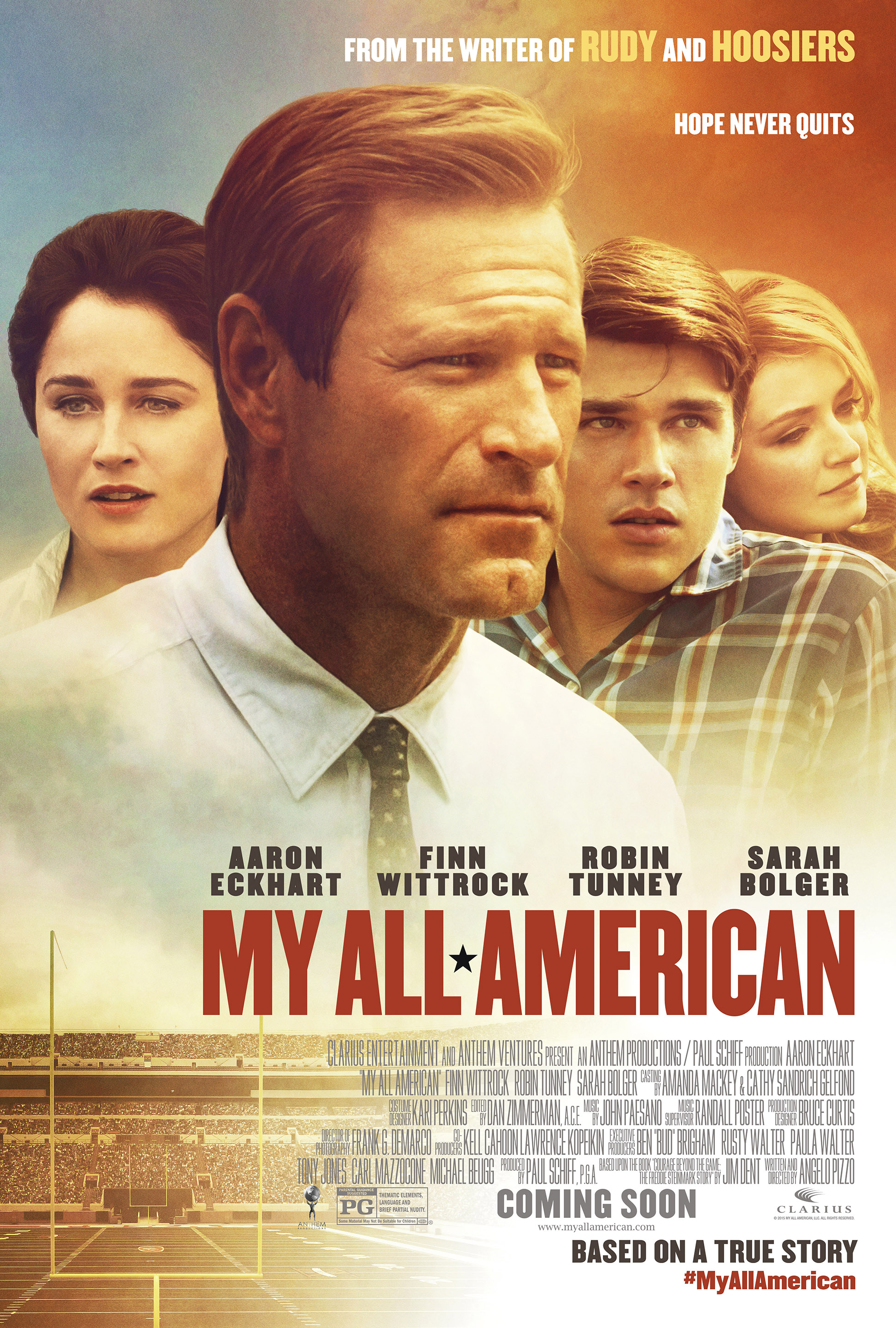
Thankfully, I think it was the latter.
HULLFISH: I love that answer. In general, though, do you feel that editors get typecast?
ZIMMERMAN: I do to a certain extent. Editors are just as creative as writers and directors and even actors to a certain point. And in my opinion all of those people can get typecast, actors, very much so. And they’re all looking to do something different and something unique. And I think with editors, there’s no difference. Even though you’re good at a particular genre of film or a particular storytelling set, we’re storytellers and we’re always trying to stretch those muscles. It was so great for me to finally be able to get a script like Angelo’s and you say, “Oh my God, this is just so well written,” and it’s so amazing it really becomes exciting to have the opportunity to challenge yourself in a different way. That’s why, coupled with the fact that I fell in love with the story and it was right up my alley – I do sometimes think you get typecast a little bit, so any time you can break the mold something great happens. I think throughout ones career opportunities surface that help redefine you as a storyteller which is what is so exciting, for me, about this profession. You continually grow and learn. However it’s hard sometimes to risk waiting because ultimately you hate to turn down any work even if it’s similar to your previous work, because you may not get that opportunity again.
HULLFISH: This particular director is a first time director, but he’s written some of the classic sports movies ever, including “Rudy” and “Hoosiers.”
my-all-american-MMA_Dom_Tlr_stereo_h264_sd from Steve Hullfish on Vimeo.
ZIMMERMAN: You’re talking about iconic movies that people reference today and they were made almost 30 years ago.
HULLFISH: So what about a job interview for a big action flick? Why are you the right person to edit it? You have a sensibility for those kinds of scenes?
ZIMMERMAN: I do and I think it really comes down to being a fan of movies. When I watch movies, I am a fan first. Sometimes I will go back and rewatch a great movie to look for elements of our craft that were used and study film. One of my favorite movies from last year was “Whiplash” and I saw it before it even became a mainstream success and I thought, “This was amazing. I would give my left arm to work on a project like this.” It had great performances, great set pieces with the drumming and great editing… I watched it a lot..
HULLFISH: Talk to me about your basic approach to a simple dramatic scene, then we can get into something more complicated.
Zimmerman’s edit suite.
ZIMMERMAN: Basically, what I’ll do is string out the dailies in a sequence and hit play and I watch every single frame from sync clap to when they turn the camera off of every take. I make general notes in my head. I have a bit of a photographic memory, so it really helps with retaining things that I liked. So I watch it down another time. Then I typically write the takes that I liked the most and I’ll re-visit those takes. In the timeline I’ll put little markers and I’ll make notes of what I liked: the audio, or the performance or the composition of the shot. So, basically I create a little selects bin.
HULLFISH: And how do you organize that selects bin?
ZIMMERMAN: I’ll do a selects reel. I’ll create a new timeline and then string the selected takes into it and use that to pull from. What I try not to do is build a selects reel and shave it into a scene. I use the selects reel as inspiration and when I start cutting, using those select takes first, the scene takes shape from there. One of the things I do very often, when I have a first draft of a scene done is to watch it silent just to see how it plays and if I can understand what is happening within the scene. Then I’ll turn the sound back on and “sound” the whole scene out, so I’ll put backgrounds on it, if there’re gunshots or whatever, I’ll put all the temporary sound effects that I think fill it out and then go back and watch it and then fine cut. Once I’m done with that, I try to find a piece of music that will work, if the piece calls for it. What I’ve found in the past – and I think this is why I do my process this way – is that if I start with the raw dailies and production sound and then you put a cue to it, I find that my timeline is 95 percent music. I find that I lean too heavily on the music when I cut a scene, which is why I “sound” it first, because giving the scene the opportunity to play without music causes people to lean in a little more instead of being manipulated by a cue one way or the other. So that’s how I cut. Ultimately, as you cut more and more and more scenes, you start stringing them together. Usually, during the production process I’ll have two versions of the movie. I’ll have the assemble that’s my first pass that I try not to ever touch, and then I’ll have more of a whittled down pass as I put it together and I realize that this is maybe duplicate information, or certain dialogue can come out.
HULLFISH: I was just talking to Joe Walker about cutting “Sicario” and he said that he cut with the director completely silently. Like you said, “Just turn off the monitors.”
ZIMMERMAN: I do it all the time. It was actually a tool that Wes (Ball, director) loved and embraced and actually did a lot by himself when he would do little things prior to “Maze Runner.” (director Wes Ball pictured, left, at mixing console) We’d be cutting a scene together or fine-tuning a scene and he’d say, “Alright!” And I’d say, “You got it” and I’d hit the mute button on the mixer and we’d just watch it with nothing. It’s truly amazing how effective it can be, you either find yourself really engaged, or you really start to find out where things feel as if – “We could really cut that shot a little shorter” or, “Geez, that really needs to breathe a little bit.” I find it especially helpful when you’re cutting really big action scenes where you’ve got multiple cameras and where you can cut the same piece of action a couple of different ways, watching it with no sound – which is what I did a LOT with the football in “My All American” really helps you connect with what I really want the viewers to see and feel. If I can connect to a scene with NO sound, I know an audience is really going to be able to connect even better WITH sound.
my-all-american-MAA_EPK_Its28SteinmarkAgain_Clip_h264_sd from Steve Hullfish on Vimeo.
HULLFISH: I’ve cut like that myself… I can’t remember who taught me that trick, but I’ve cut like that for a while… not cutting the first pass, but watching the first pass without sound. It’s good to hear you and Joe say that they find a great value to it. Cutting the first pass at a dramatic scene (a dialogue scene) would be difficult or impossible, but watching it after it’s cut is definitely a good thing.
 ZIMMERMAN: If you look at history though, look at all the silent movies, the Buster Keaton movies, that didn’t have sound. And a lot of my inspiration comes from those old Buster Keaton movies, because a lot of those action sequences that he ended up putting together way back then, is still outstandingly phenomenal to me.
ZIMMERMAN: If you look at history though, look at all the silent movies, the Buster Keaton movies, that didn’t have sound. And a lot of my inspiration comes from those old Buster Keaton movies, because a lot of those action sequences that he ended up putting together way back then, is still outstandingly phenomenal to me.
HULLFISH: I just wrote a short essay on rhythm and pacing in editing – comparing it to the ideas of rhythm and pacing in other art forms and the main image I used for the article was the shot of Buster Keaton hanging off the clock because it was appropriate in so many ways… So you make the duplicate of your simple dialog scene, you watch it through once and don’t really make any notes. Then you go through again and put some locators in, and then you do not cut from that sequence, but use it for inspiration. Do you put your selects in the source window and cut using the selects as a source? From the sub-clips or clips in the bin?
ZIMMERMAN: Then I go back to my scene bins and I cut from those because I know that, say, take 4 had the best opening. So I’ll lay that in my timeline for my first shot and then go to all the other subsequence shots just to refresh my memory, to see why I didn’t choose those, then I pick the next piece. I tackle a scene differently every time. There used to be a time when I first started and I’d take the master shot, which is the widest shot I could find that had the scene from start to finish and I’d lay that in to the timeline and use it until I felt it was time to cut in and then I’d put our lead actor’s best take into the timeline and go about editing that way in layers with the master of the bottom level and then the best take of one actor on layer two and the best take of another actor on layer three and then try to jigsaw puzzle it together, but I found that it didn’t give me the best starting point and it was very clunky, so I changed my methods and the way I cut now works pretty well for me.
HULLFISH: When you edited in that timeline layered way, what NLE were you cutting in?
CLICK “NEXT” BELOW TO CONTINUE READING
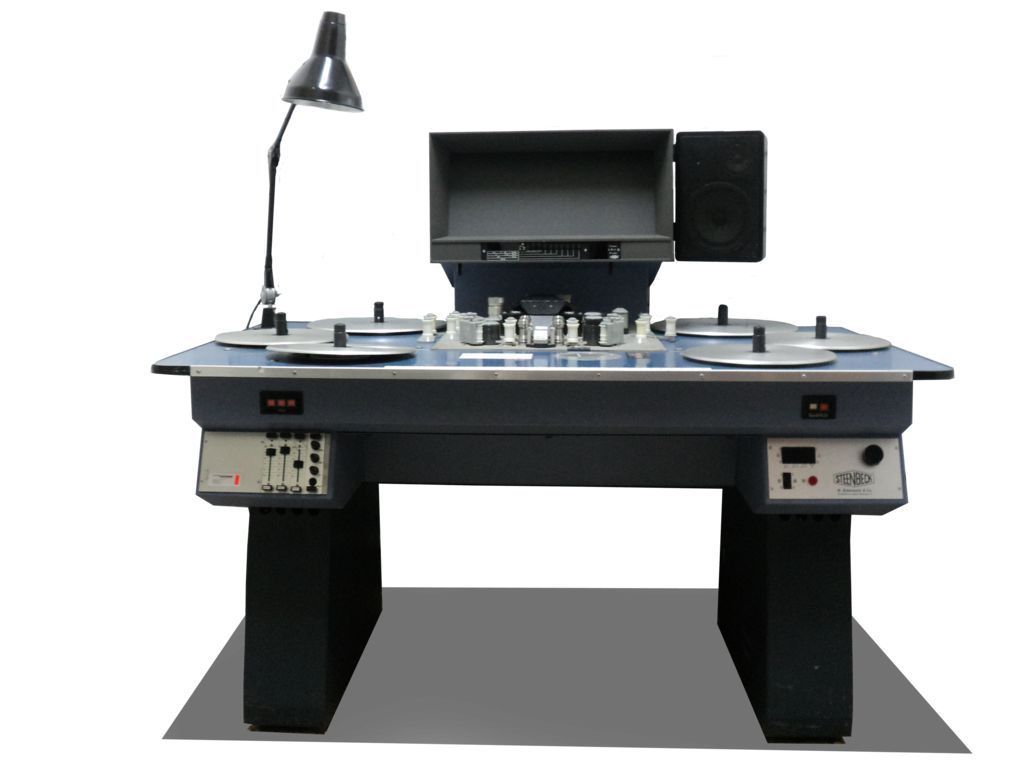 ZIMMERMAN: Basically when I started in the business, I started in sound and cut on Moviolas, so I cut on film for many years. I started working with my father in 1995 on “The Nutty Professor” and basically that was on Light
ZIMMERMAN: Basically when I started in the business, I started in sound and cut on Moviolas, so I cut on film for many years. I started working with my father in 1995 on “The Nutty Professor” and basically that was on Light
works. Eventually we graduated from Lightworks to Heavyworks. We did film dailies, print and mag andwe sunk it and then telecined that. Then he would cut digitally from the telecined print and mag. We did that for a lot of years on a lot of shows. “Just Married” in 2002 was the last one we ever printed film. On “Cat in the Hat” in 2003, that was our first show on Avid. I had dabbled in Avid as early as 1992 just to see what the program was and be familiar with it, but I wasn’t the editor at the time and my dad really liked working with Lightworks. It had a very reminiscent feel of a KEM for him with the controller, the sort of old-style Steenbeck controller looking thing.
 HULLFISH: I used to have one of those controllers for my Avid back in the early 1990s.
HULLFISH: I used to have one of those controllers for my Avid back in the early 1990s.
ZIMMERMAN: Yeah, they did actually, but he didn’t like it as much. I don’t know why… But on “Cat in the Hat” we converted him to Avid and that was that. But literally, I’ve cut on nearly every platform that’s out there right now.
HULLFISH: Feature film-wise? What movies did you cut and what did you cut them on?
ZIMMERMAN: “Cat in the Hat” was Avid, all the way up until my first editing gig in 2005, which was “The Omen” which was cut on Avid. And then the very next movie I cut was “Alien versus Predator: Requiem” and that was with the Brothers Strause (directing team) who owned Hydraulics, which was a visual effects company. They were first time directors and they wanted to use Final Cut, so I learned Final Cut. For the next three or four shows, I was on Final Cut. Walter Murch had been one of the more prominent proponents of Final Cut. Alan Bell was another one was using it at the time, and then me. It seemed to be the three of us trying to be the catalysts for change in the business or at least to promote healthy competition. A little competition lets you realize, “We have to step up to the plate here or we’re gonna get bypassed. So I never looked down upon good competition because I thought it would accelerate the next great thing.
HULLFISH: I rising tide that lifts all boats.
ZIMMERMAN: I think it really did, to me, Final Cut really helped push Avid into the high definition world and could be used in high definition editing. Then, “Season of the Witch” was the last show I did on Final Cut and went back to Avid for a movie with Robert Rodriguez producing called “Predators.” The post was done in Austin with his Troublemaker facility which was primarily Avid. I cut on Avid from then on until very recently when I learned Premiere. I had come on to a project at FOX for a very short amount of time and they were cutting on Adobe Premiere, which was my first exposure to that system. When I left, I was offered to help out on an independent movie that is cutting on Premiere and we are kind of filtering the program through its infancy, in my opinion.
HULLFISH: I’m also cutting an indie on Premiere right now. I’ve also cut features in Avid and Final Cut. I doubt there are many of us who’ve cut features using all three of those. What do you think of Premiere? How are you feeling about it?
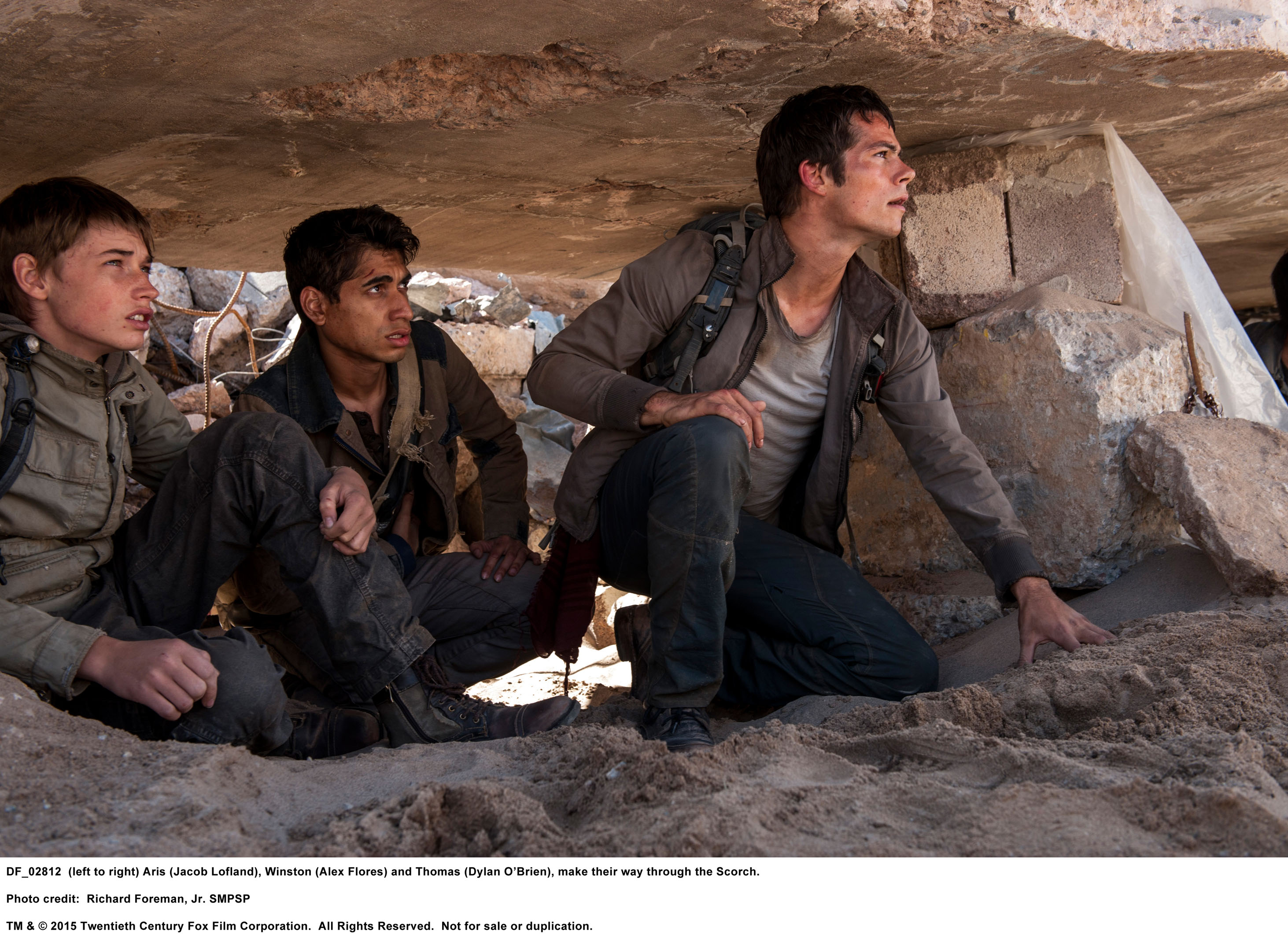 ZIMMERMAN: What I don’t think that people grasp when they create these programs – and I think Avid did, which is why I think they’re so successful – is that media sharing and media management is crucial. It is literally almost 100 percent of the game. So there’s a lot of frustration with it, but I also feel like some of the features – just as an editor – I love it. The active timeline is amazing, the fact that Adobe makes everything so that it’s integrated so well with their other programs like After Effects and Photoshop, there’s so many great values with a company like Adobe coming out with a non-linear editing system that I think can really be competitive. I think the problem though is downstream. We’re not the only ones dealing with this material. I’ve always used this analogy: editorial is like the hub of a wheel. And we feed all the spokes of the wheel: the music department, the sound department, the composer, visual effects, the DI. Everything comes through us and from us. When you have a system that can’t easily integrate in a media sharing idea, it makes it very difficult. People downstream resist because they’re not used to it, or it’s new or the lists don’t look the same.
ZIMMERMAN: What I don’t think that people grasp when they create these programs – and I think Avid did, which is why I think they’re so successful – is that media sharing and media management is crucial. It is literally almost 100 percent of the game. So there’s a lot of frustration with it, but I also feel like some of the features – just as an editor – I love it. The active timeline is amazing, the fact that Adobe makes everything so that it’s integrated so well with their other programs like After Effects and Photoshop, there’s so many great values with a company like Adobe coming out with a non-linear editing system that I think can really be competitive. I think the problem though is downstream. We’re not the only ones dealing with this material. I’ve always used this analogy: editorial is like the hub of a wheel. And we feed all the spokes of the wheel: the music department, the sound department, the composer, visual effects, the DI. Everything comes through us and from us. When you have a system that can’t easily integrate in a media sharing idea, it makes it very difficult. People downstream resist because they’re not used to it, or it’s new or the lists don’t look the same.
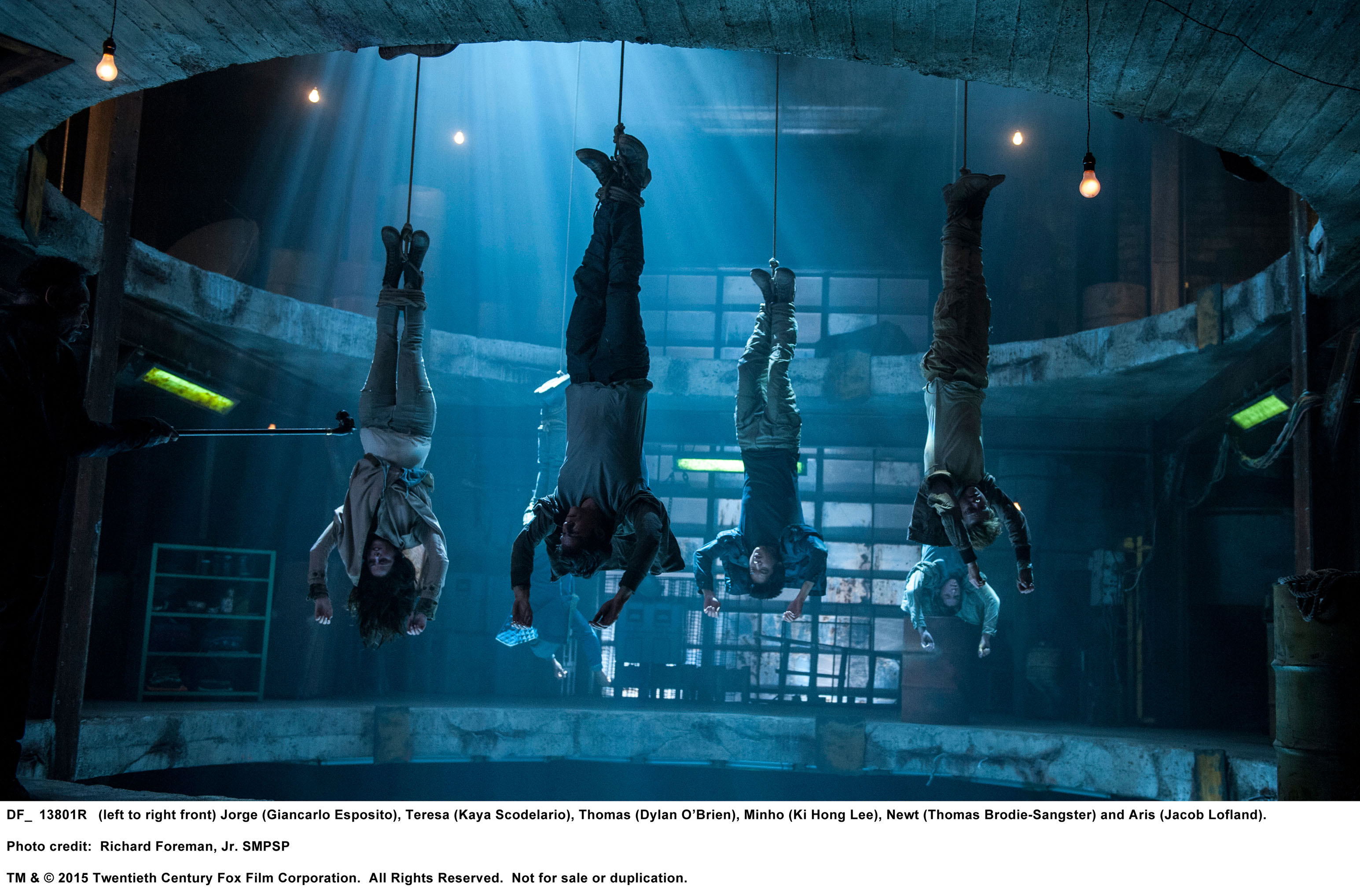 HULLFISH: We talked about your approach to a simple dramatic scene. Can you transpose that approach to doing the complex big action scenes that are in so many of the movies you’ve edited? Or do those scenes require a different approach?
HULLFISH: We talked about your approach to a simple dramatic scene. Can you transpose that approach to doing the complex big action scenes that are in so many of the movies you’ve edited? Or do those scenes require a different approach?
ZIMMERMAN: Yes actually, because what I end up doing, depending on how many cameras there are – like the latest installment of “Die Hard” for every car crash there were 10 cameras – so you literally had 10 different ways to view that one small section of action. I find in a scenario like that, you need to find the moments that are really impactful and then I’ll create sort of a selects timeline that turns into what the cut becomes. It’s the only way to really see everything you’d need. What I do is, I’ll watch everything: all the cameras, all the stunts, all the takes, and create a section of action for A, B and C cameras. But I’ll get a timeline of action, then with that timeline – which is essentially my selects timeline of all of the dailies that you need to make the scene work and then duplicate it and start stripping away what are the weaker of the three or the two angles of an individual piece of action and see what you’re left with. And then the storytelling part comes in and you think, “What are we trying to say here?” It’s a piece of action, but what story are we telling? For example on The Maze Runner: Scorch Trials our characters were running away from crank and we really want to be with them at that moment, so the wider shot doesn’t work because you want to be on their faces to know that how scared they are. So you throw out the wide shot and whittle it down from there. Ultimately, inevitably for me, almost every time I whittle it down to an action sequence and I say, “OK, we can pump this up a little more!” and so you go back through the selects timeline and say, “OK, this was a cool piece.” and you cut that back in to fill it out a little more. As I get start to get excited is when I know it’s working.
maze-runner-the-scorch-trials-MRST_FilmClip_Surrounded_Stereo_h264_sd from Steve Hullfish on Vimeo.
HULLFISH: The thing I’m cutting right now has a lot of race car action and I find that my heart rate starts to race as I’m cutting the thing. Does that happen with you when you’re cutting action? I got an adrenaline rush from this!
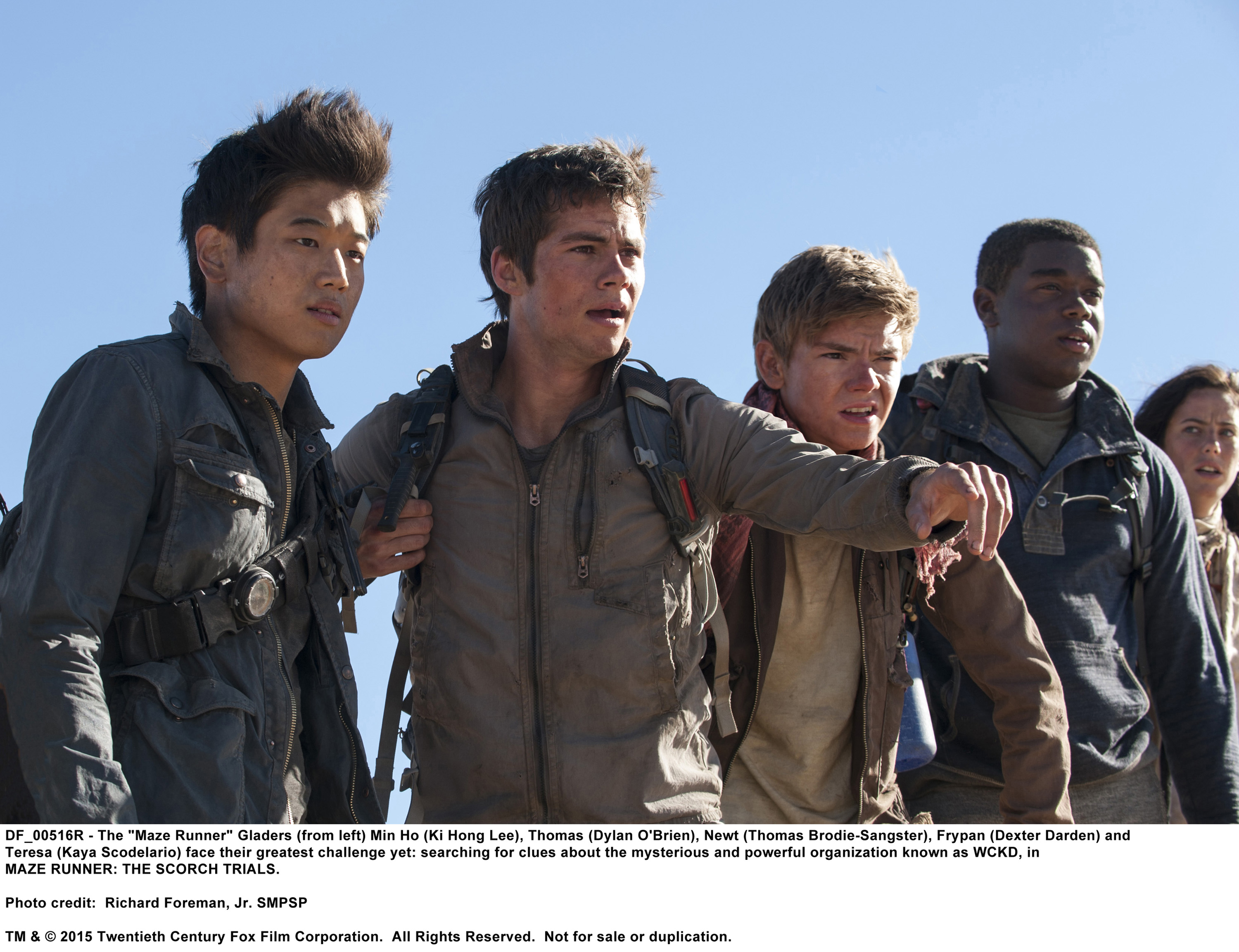 ZIMMERMAN: Constantly! The physical manifestation of it is really strong, especially with the “Maze Runner” movies – because the actors are not using stunt guys most of the time, they’re the ones running, running, running all day long, take in and take out and they never complain. I mean, running up sand dunes, which, by the way, having done it, is extremely difficult. And take after take after take they’re running up these sand dunes and making it look so effortless. After cutting one of the sequences in the original “Maze Runner” when Thomas and Minho run away from the Grievers in the maze because they’ve set off the alarms, I was panting. I felt like I had just worked out and as I was cutting it, my assistant came in and said “Why are you out of breath?” And I said, “I’m just cutting this sequence and it’s really crazy and…” and then he asks, “Why are you talking so fast?”
ZIMMERMAN: Constantly! The physical manifestation of it is really strong, especially with the “Maze Runner” movies – because the actors are not using stunt guys most of the time, they’re the ones running, running, running all day long, take in and take out and they never complain. I mean, running up sand dunes, which, by the way, having done it, is extremely difficult. And take after take after take they’re running up these sand dunes and making it look so effortless. After cutting one of the sequences in the original “Maze Runner” when Thomas and Minho run away from the Grievers in the maze because they’ve set off the alarms, I was panting. I felt like I had just worked out and as I was cutting it, my assistant came in and said “Why are you out of breath?” And I said, “I’m just cutting this sequence and it’s really crazy and…” and then he asks, “Why are you talking so fast?”
MAZERUNNEREPK from Steve Hullfish on Vimeo.
HULLFISH: (laughs)
ZIMMERMAN: It really manifests itself into your physical being, which is why I cut standing up now.
HULLFISH: I was going to ask you about that. I’m at a sit and stand desk right now. I love standing up while I’m editing. Do you do it all the time or just part of the time.
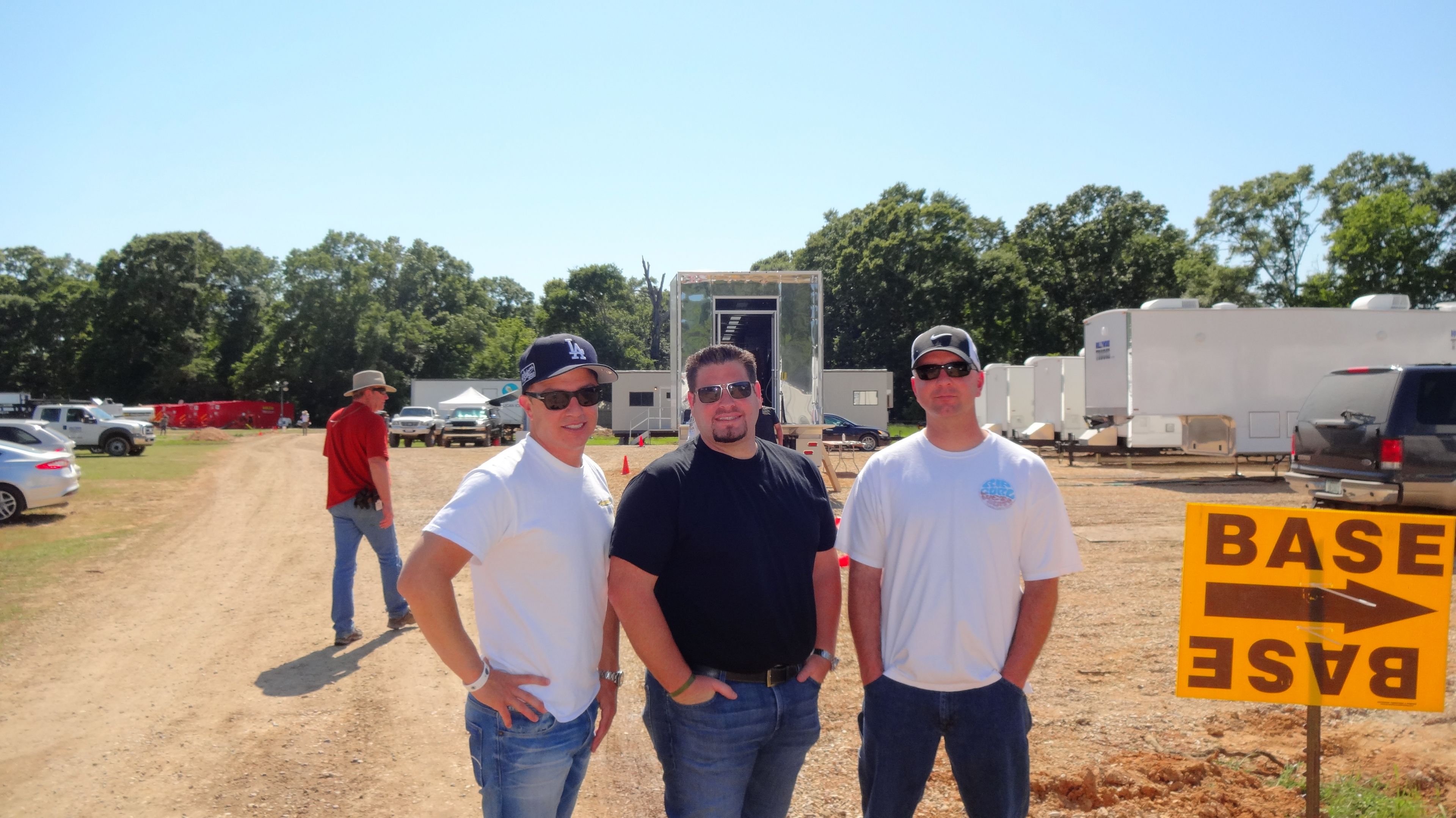 ZIMMERMAN: The sit and stand desks are amazing. I’m at one now, too. I’m getting used to it because sometimes it’s nice to lower it and sit for a bit. On “Maze Runner” and on “My All American” and “Maze Runner: The Scorch Trials” I had a straight standing desk and just got used to standing all the time. I had a high back chair that I could lean on if I wanted to. (pictured left to right: Zimmerman’s 1st assistant PJ Burch, Zimmerman, and 1st assistant Ron Stanik on Mazerunner set) Sometimes when you get in to the sound work and really getting into that minutiae cutting where you’re really focusing, sometimes I’ll sit. But I also find that standing and being able to just take a step to the left or a step to the right I feel like that helps me reset.
ZIMMERMAN: The sit and stand desks are amazing. I’m at one now, too. I’m getting used to it because sometimes it’s nice to lower it and sit for a bit. On “Maze Runner” and on “My All American” and “Maze Runner: The Scorch Trials” I had a straight standing desk and just got used to standing all the time. I had a high back chair that I could lean on if I wanted to. (pictured left to right: Zimmerman’s 1st assistant PJ Burch, Zimmerman, and 1st assistant Ron Stanik on Mazerunner set) Sometimes when you get in to the sound work and really getting into that minutiae cutting where you’re really focusing, sometimes I’ll sit. But I also find that standing and being able to just take a step to the left or a step to the right I feel like that helps me reset.
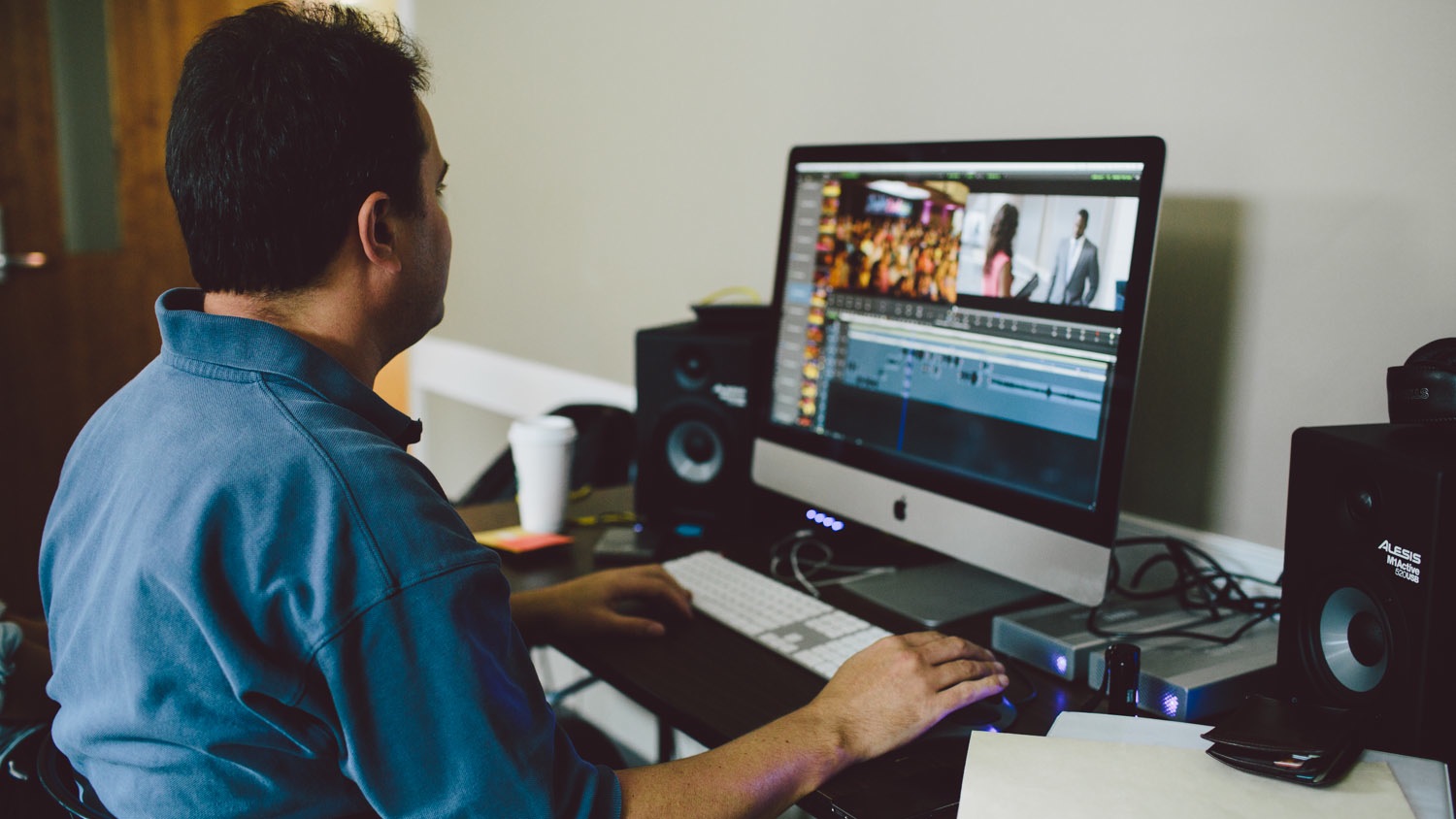 HULLFISH: Obviously I edit right at the desk when I’m actually operating, but when I go to watch a scene back, I’ll often hit the play button and step back physically from the controls and the monitor. Or at certain times, I’ll play a string-out and sometimes I’ll actually pace. When I cut “War Room” I started out working right on set for six weeks and I sat at the beginning and I didn’t like it, (author pictured on set of “War Room”) so I had the grips rig Apple boxes under the editing table so that I could stand. Obviously I couldn’t go up and down then, but I preferred standing for 12 hours to sitting for 12 hours a day.
HULLFISH: Obviously I edit right at the desk when I’m actually operating, but when I go to watch a scene back, I’ll often hit the play button and step back physically from the controls and the monitor. Or at certain times, I’ll play a string-out and sometimes I’ll actually pace. When I cut “War Room” I started out working right on set for six weeks and I sat at the beginning and I didn’t like it, (author pictured on set of “War Room”) so I had the grips rig Apple boxes under the editing table so that I could stand. Obviously I couldn’t go up and down then, but I preferred standing for 12 hours to sitting for 12 hours a day.
ZIMMERMAN: That’s basically what I had on the three movies. They had built this custom wood stand to my height: putting the top of the desk at a right angle to my elbow. I do the same thing as you. You cut and cut and cut. Typically I’ll have a big client monitor off to the side and it’s great, just like you said, to take a step back, literally and turn to another monitor and when you step back to the machine it’s like you’re re-engaging yourself back to that mode and it starts to really separate you from being the mechanic to being the driver.
HULLFISH: How do you or your assistants organize those big action sequences?
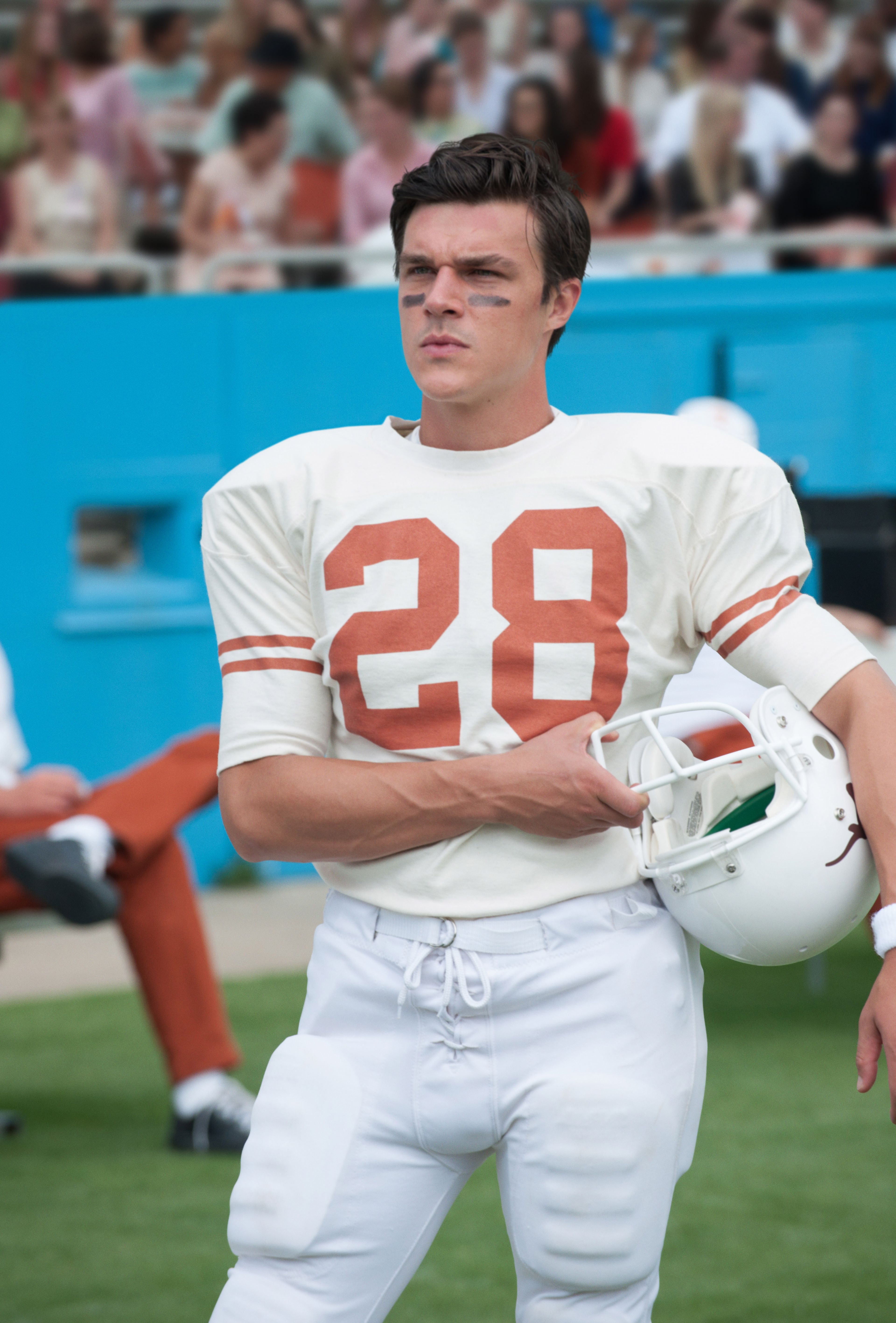 ZIMMERMAN: When I was taught as an assistant – and I always assisted my dad, who had cut on film for 30+ years – and back then, when they were cutting on film they would do KEM rolls and break it down like that. My dad said something to me that stuck and made sense. He said, “I want you to organize the film for me the way you would cut it or how you think I would cut it.” So the traditional way of organizing it from wide shot to medium shot to main actor close up to other actor close-up to insert in a bin stopped applying to me. I would read the script and it would say, “Start on a close-up of the watch and pull back to reveal the big empty chasm of space.” So I would start to organize it the way he would start to cut it. And that didn’t mean cutting to the wide shot first, it would mean cutting to the watch first or starting on someone’s eyes first. So I started organizing it based on the scene itself. My dad liked it and I liked doing it like that and it was a great way of organizing dailies and so I’ve taught my assistants to do it that way. I don’t use ScriptSync because I don’t find that it’s that useful to me. I know it can be very useful, but with my memory the way it is, if someone says, “Wasn’t there a take where he does this and this?” I just say, “That’s take three” or whatever. Ultimately when I get older and my memory goes in the toilet, I think ScriptSync will be fantastic but currently I don’t use it. Also, I know it takes quite a bit of time to implement.
ZIMMERMAN: When I was taught as an assistant – and I always assisted my dad, who had cut on film for 30+ years – and back then, when they were cutting on film they would do KEM rolls and break it down like that. My dad said something to me that stuck and made sense. He said, “I want you to organize the film for me the way you would cut it or how you think I would cut it.” So the traditional way of organizing it from wide shot to medium shot to main actor close up to other actor close-up to insert in a bin stopped applying to me. I would read the script and it would say, “Start on a close-up of the watch and pull back to reveal the big empty chasm of space.” So I would start to organize it the way he would start to cut it. And that didn’t mean cutting to the wide shot first, it would mean cutting to the watch first or starting on someone’s eyes first. So I started organizing it based on the scene itself. My dad liked it and I liked doing it like that and it was a great way of organizing dailies and so I’ve taught my assistants to do it that way. I don’t use ScriptSync because I don’t find that it’s that useful to me. I know it can be very useful, but with my memory the way it is, if someone says, “Wasn’t there a take where he does this and this?” I just say, “That’s take three” or whatever. Ultimately when I get older and my memory goes in the toilet, I think ScriptSync will be fantastic but currently I don’t use it. Also, I know it takes quite a bit of time to implement.
HULLFISH: That’s true. And with Avid’s current difficulty with the licensing of ScriptSync, you’ll be lucky if they’ve got that settled by the time your memory goes.
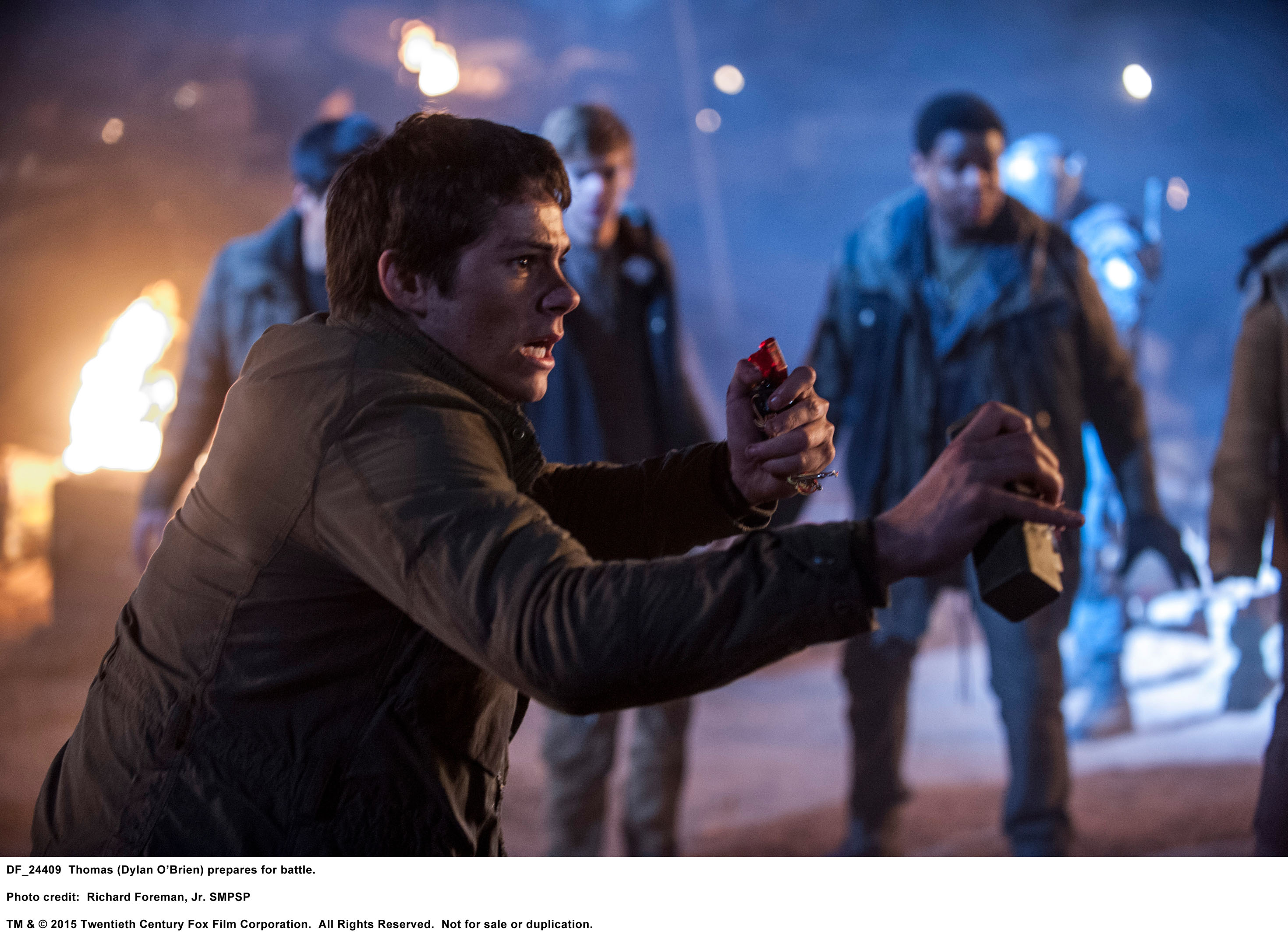 ZIMMERMAN: Also, things are being shot digitally almost exclusively now and you’re finding more and more that the takes just run and they’ll do three takes under one slate. So it can be more challenging with ScriptSync because now you have to subclip a take, which I’m not really a big fan of, because now I’m unsure what the take name is because now you can have the third take of take one. And to me, that should just be take one.
ZIMMERMAN: Also, things are being shot digitally almost exclusively now and you’re finding more and more that the takes just run and they’ll do three takes under one slate. So it can be more challenging with ScriptSync because now you have to subclip a take, which I’m not really a big fan of, because now I’m unsure what the take name is because now you can have the third take of take one. And to me, that should just be take one.
HULLFISH: I’ve spoken to some big name editors who ONLY cut stuff that’s been sub-clipped. I think that is a workflow thing for DI though. So, are you a Frame view guy with your bins? Or do you like Text view with descriptions available? This has been a discussion and thread of some amount of passion with nearly every editor I’ve spoken with.
CLICK “NEXT” BELOW TO CONTINUE READING
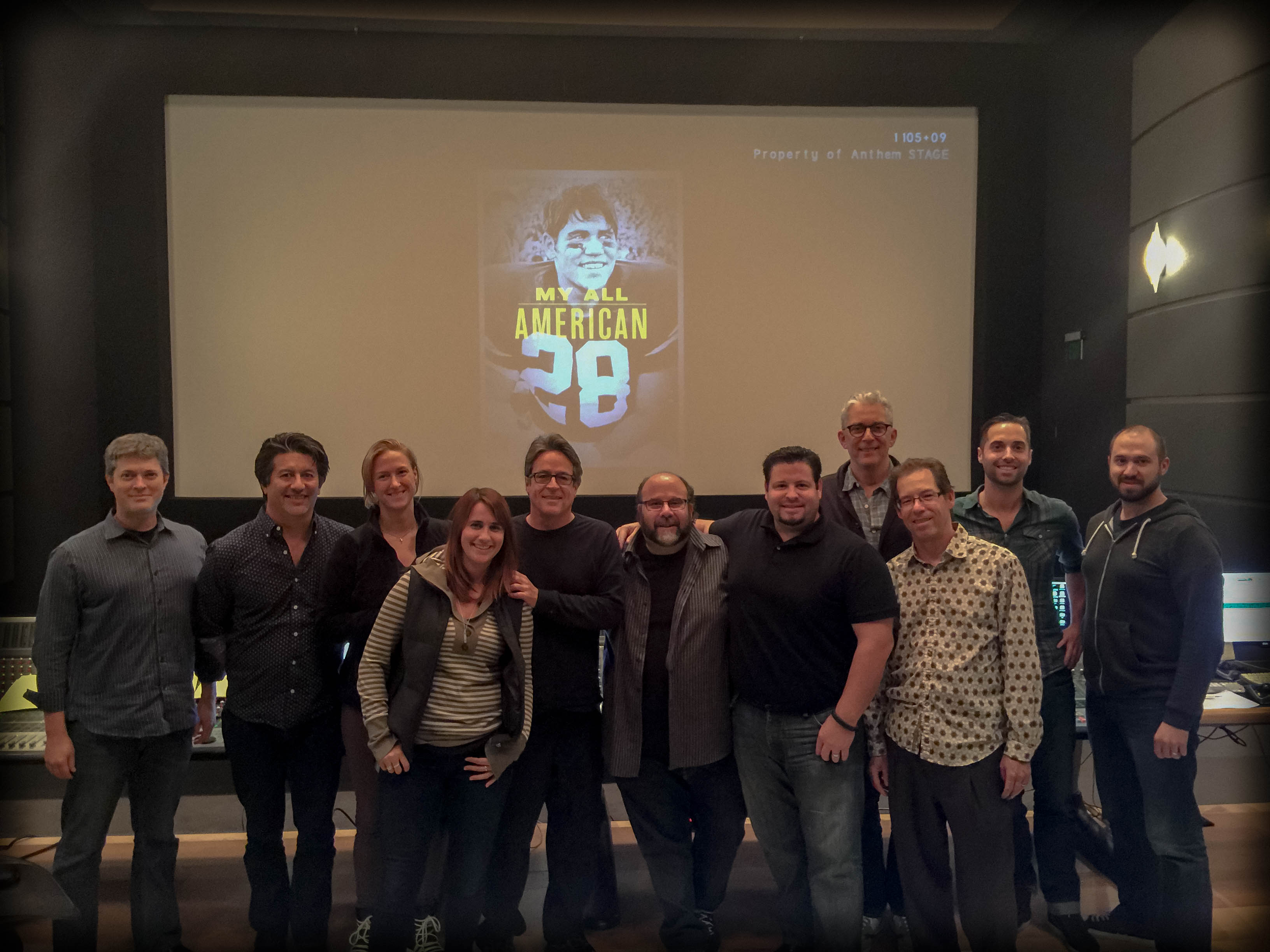
Jim Jensen (Post Super), Andy Koyama (Mixer), Margit Pfeiffer (ADR Supervisor) Jessie Pariseau (Assistant Sound Editor) Angelo Pizzo (Director) Scott Gershin (Sound Supervisor) Dan Zimmerman (Editor) Paul Schiff (Producer) Lee Scott (Music Editor) Martin Zub (MIxer) and (Dub Stage Engineer)
ZIMMERMAN: I do like Frame view, and Premiere does a great job of Frame view because you can actually scrub within the clip inside the bin and actually make in and outpoints without having to load them into your Source window, which is kind of interesting. When I get a big batch of visual effects that I’m looking at I like looking at them in Script view because it will tell me what’s new and what to look for, or what they’re asking for me to look for within the shot, whether it’s a preliminary layout or an animation change or whatever. I primarily use the Frame view because visually you know “that’s the wide shot, so I’m going to go there.”
HULLFISH: Talk to me a little bit about performance. This is one of those things that I’m fascinated with as I go through a scene is the editor’s ability to shape the tenor or the mood of the scene based on the multiple performances your given – each of which can lead in strikingly different directions.
ZIMMERMAN: It’s funny because I’ve had this conversation with so many editors as well. It truly is the one thing that people are perplexed about. It’s almost an impossible question to answer technically, because at the end of the day it’s really a subjective opinion of which take do you think is the best take or which performance is the best performance. I try to never let something technical get in the way of a good performance. A perfect example of this is in this little indie I’m cutting. One of the actors was telling a really bad joke but then kind of had to reset himself and then he told it again. And I actually used that reset in the scene because it actually made the joke funnier. There’s a fine line, because there’s a clear intent on the part of the performance within the takes that you’re given, and more often than not you’ll find out that the director is either searching for something in later takes or if as the takes progress in number the actor “finds” the performance in the later takes, you can see that in the dailies. People constantly ask me, “Well how do you know what the best take is?” You can see by watching the dailies what the intent of the director is. Some directors will burn a take because he wants to get ONE moment. There are times when you can tell that he didn’t really want the whole take, but just that one moment. You’re feeling your way through the dailies and your instincts are going to kick in. You can make an actor who may not be strong in a scene just as strong as your lead actor just by playing his dialogue on your lead actor’s face, who’s going to give you the reaction to the feelings you’re hearing and that powers that actor. There’s so many ways to make or break a scene as far as cutting performance, which is why I love the editing process so much because not only are the options infinite, but you also get to put your first stamp on it. And when you show it to your director it becomes so collaborative.
 HULLFISH: I’m trying to get at something a little different than “What’s the best performance?” In my discussion with Joe Walker he is cutting “Story of Your Life” starring Amy Adams as a scientist and he describes cutting a scene initially with her in kind of breathless awe… but later he decided that her character should be much more clinical about what she’s seeing, so he found takes that changed the entire emotion of the performance. So, not necessarily finding a better take or a worse take, but actually two performances that are equally good, but take the character’s emotional state to a whole different direction at that point in the story.
HULLFISH: I’m trying to get at something a little different than “What’s the best performance?” In my discussion with Joe Walker he is cutting “Story of Your Life” starring Amy Adams as a scientist and he describes cutting a scene initially with her in kind of breathless awe… but later he decided that her character should be much more clinical about what she’s seeing, so he found takes that changed the entire emotion of the performance. So, not necessarily finding a better take or a worse take, but actually two performances that are equally good, but take the character’s emotional state to a whole different direction at that point in the story.
ZIMMERMAN: You know as an editor that you can fall victim to – at least I do – to…
HULLFISH: …Trying to have the most emotion!
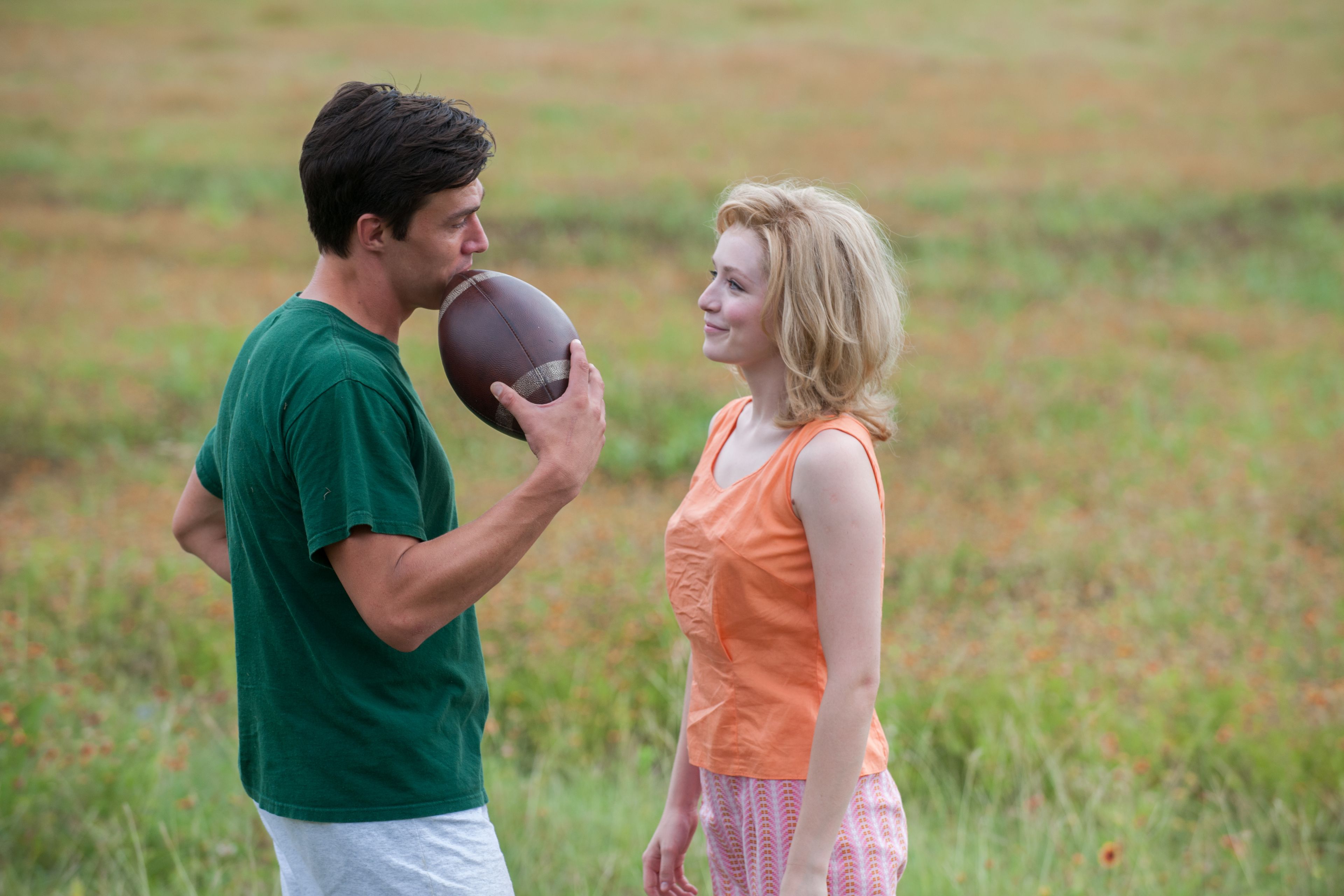 ZIMMERMAN: YES! Exactly.
ZIMMERMAN: YES! Exactly.
HULLFISH: Give me the take with the most emotion! Taking the performance with the most emotion is not always the right story-telling idea, right?
ZIMMERMAN: That’s exactly it. Sometimes you lose sight of the big picture because you’re thinking, “Wow, that’s an amazing scene!” But then you take a step back and you realize that it doesn’t work. You can totally lose yourself in a scene and I try not to fall victim to that, but sometimes you can’t help it. That’s one of the reasons that as you start cutting individual scenes and you’ve finally got a run of scenes that cut together, you want to edit them into a little sequence because that’s where you find out whether you went off the rails a little bit and then you can correct yourself.
HULLFISH: Are you finding that you try to put those strings of scenes together as soon as you can? I mean, everyone knows that movies are shot out of sequence, so if you’re editing along with camera it may be a while before you have a little string of scenes that actually intercuts.
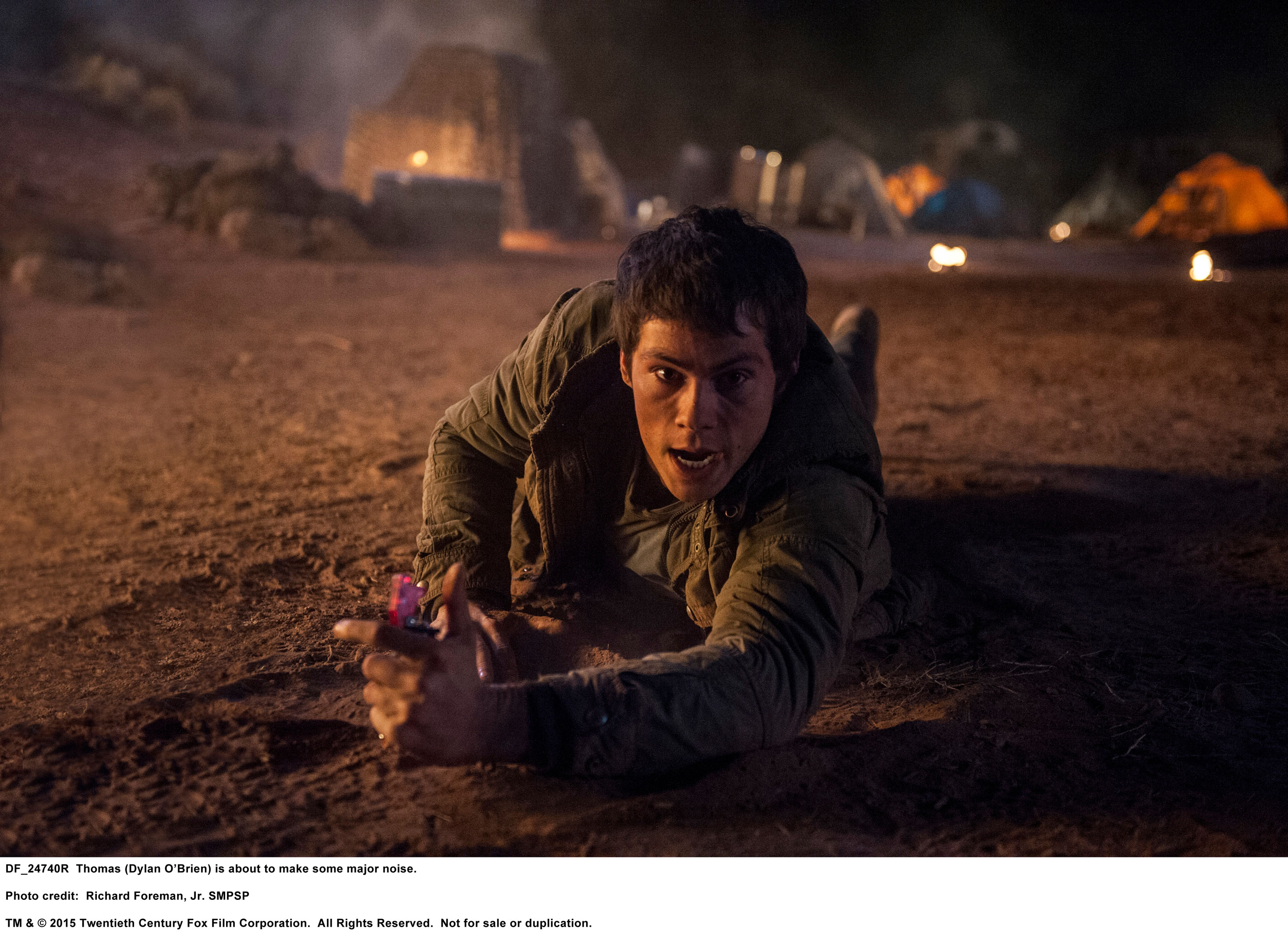 ZIMMERMAN: Absolutely. I definitely do that. I try not to wait too long. Because if you wait until you’ve got a 20 minute sequence or an entire reel you could be waiting forever. Basically, any time you can attach a scene to another scene – especially if it’s a scene that takes place at a different time and or a different place – you want to cut those together so you can help the director with something like “This is what I have as a transition. Were you planning on shooting something? Because if not, this is what the transition looks like and you may want an establishing shot or some sort of other shot. Transitions I find are so important in movies because it really does tell your audience “We’re progressing and moving on” in a seamless way and it feels organic to the story you are telling. However if you’ve got an awkward/bad transition it can take the audience out of the movie causing them to disengage with the story which is not good. There’re so many things to think about when you’re editing a film. Our job and skillset is so intricate and so complicated, it really does take a long conversation to touch upon all the things that we do.
ZIMMERMAN: Absolutely. I definitely do that. I try not to wait too long. Because if you wait until you’ve got a 20 minute sequence or an entire reel you could be waiting forever. Basically, any time you can attach a scene to another scene – especially if it’s a scene that takes place at a different time and or a different place – you want to cut those together so you can help the director with something like “This is what I have as a transition. Were you planning on shooting something? Because if not, this is what the transition looks like and you may want an establishing shot or some sort of other shot. Transitions I find are so important in movies because it really does tell your audience “We’re progressing and moving on” in a seamless way and it feels organic to the story you are telling. However if you’ve got an awkward/bad transition it can take the audience out of the movie causing them to disengage with the story which is not good. There’re so many things to think about when you’re editing a film. Our job and skillset is so intricate and so complicated, it really does take a long conversation to touch upon all the things that we do.
HULLFISH: Let’s talk about pacing a little bit, both at the micro level, but also the macros pacing, when you do get the entire thing laid out in a rough assembly and you go, “Wow. I’ve got a 2 hour and 40 minute film and it feels like it. Now what do I do?”
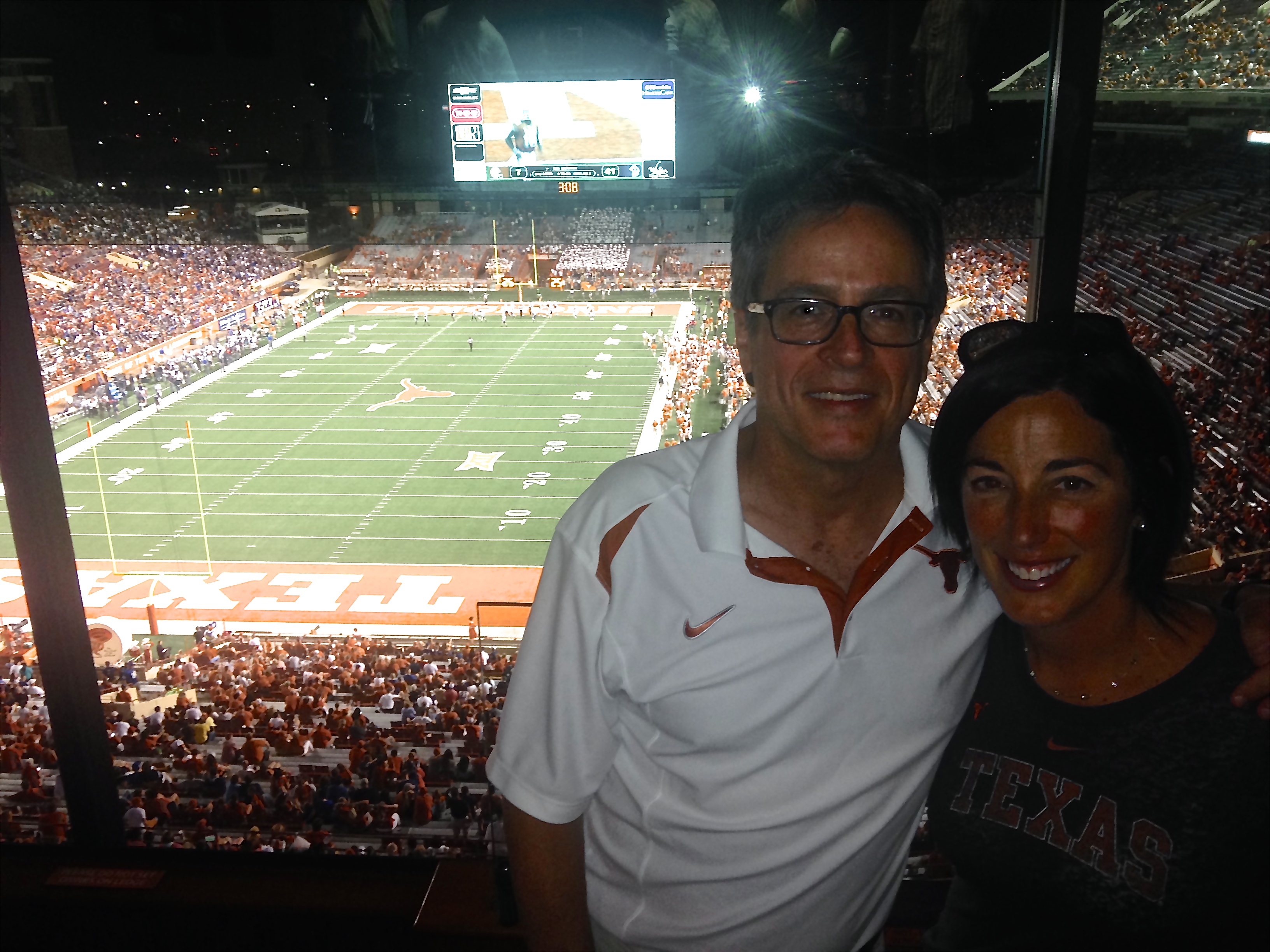 ZIMMERMAN: It’s funny with directors (director Anthony Pizza pictured left with Zimmerman’s wife, Joann), because sometimes they always want to see everything. This is why I always have two timelines. I have my assembly – which does have everything – and typically it’s going to be the fattest version of the movie that hopefully will ever exist. Then there’s my editor’s cut, which is ultimately what I’m going to first show the director when he first comes into my edit bay to watch the movie for the first time. Those conversations before hand can be either very simple or very difficult, depending on what the director wants to see. One director might say, “Hey, when I come in to the edit room, I want to see what you think the movie could be.” In that case I will take liberties with the footage like: taking scenes out or taking moments out of scenes, that I think hamper where the movie needs to end up. Some directors want to see everything so I will show them a tight version of the assembly but I will always have my editors cut as well. I often tell new directors to be open to all possibilities because, “I can never get your first time viewing back. You get a first time viewing ONCE. And if you want that viewing to be of the pass with everything, then fine, but you’re never going to know if you miss something unless you SEE it with it out.” I always tell them, “I’m not going to do anything to your movie that can’t be undone or be put back in.” The directors that values your opinion, craft and ability, are so special to collaborate with. But there are those directors that look at the dailies and say, “Look, I want this take from here to here and this take from here to here,” they almost give you a blueprint of how to put the movie together, which is awesome as well because it challenges you to figure out how to incorporate your thoughts more strategically. So it totally depends. But to get back to pacing, there’s two trim passes. One is the easy trim pass where you look at it and say, “This can go and this can go” and you pull out stuff you KNOW you can pull out. Then there’re the tough decisions. So if you start at 2:45 and you know you want to be around 2 hours, I always think that there’s 20 minutes that will be easy and there’s 20 minutes that are going to be the hard ones. I also try to never hit a number. I think numbers are ridiculous. There are so many examples of movies that have been long but they’re amazing movies because of it. Most recently, “The Martian.” “The Martian doesn’t happen unless you give him that time alone. Do you know what I mean?
ZIMMERMAN: It’s funny with directors (director Anthony Pizza pictured left with Zimmerman’s wife, Joann), because sometimes they always want to see everything. This is why I always have two timelines. I have my assembly – which does have everything – and typically it’s going to be the fattest version of the movie that hopefully will ever exist. Then there’s my editor’s cut, which is ultimately what I’m going to first show the director when he first comes into my edit bay to watch the movie for the first time. Those conversations before hand can be either very simple or very difficult, depending on what the director wants to see. One director might say, “Hey, when I come in to the edit room, I want to see what you think the movie could be.” In that case I will take liberties with the footage like: taking scenes out or taking moments out of scenes, that I think hamper where the movie needs to end up. Some directors want to see everything so I will show them a tight version of the assembly but I will always have my editors cut as well. I often tell new directors to be open to all possibilities because, “I can never get your first time viewing back. You get a first time viewing ONCE. And if you want that viewing to be of the pass with everything, then fine, but you’re never going to know if you miss something unless you SEE it with it out.” I always tell them, “I’m not going to do anything to your movie that can’t be undone or be put back in.” The directors that values your opinion, craft and ability, are so special to collaborate with. But there are those directors that look at the dailies and say, “Look, I want this take from here to here and this take from here to here,” they almost give you a blueprint of how to put the movie together, which is awesome as well because it challenges you to figure out how to incorporate your thoughts more strategically. So it totally depends. But to get back to pacing, there’s two trim passes. One is the easy trim pass where you look at it and say, “This can go and this can go” and you pull out stuff you KNOW you can pull out. Then there’re the tough decisions. So if you start at 2:45 and you know you want to be around 2 hours, I always think that there’s 20 minutes that will be easy and there’s 20 minutes that are going to be the hard ones. I also try to never hit a number. I think numbers are ridiculous. There are so many examples of movies that have been long but they’re amazing movies because of it. Most recently, “The Martian.” “The Martian doesn’t happen unless you give him that time alone. Do you know what I mean?
my-all-american-MAA_EPK_NationalChampions_Clip_h264_sd from Steve Hullfish on Vimeo.
HULLFISH: Absolutely.
ZIMMERMAN: Subjectively you kind of feel it. I think some of the harder trims and internalizing how you cut a scene, a lot of times when I try to take time out, I look for moments that are either duplicates of each other within a scene or to figure out “What’s this scene about? It’s about that he loves her. Got it.” So then I try to figure out how to get to that core of the scene sooner. Within the framework of a scene, what’s the essential take-away from the scene that you want your audience to take away and get to that as soon as possible.
HULLFISH: What about pacing in action? I’m editing a racing picture and I almost feel like I’ve got an internal clock of when I’ve been on a shot long enough. I discussed this in my pacing essay. Sometimes it’s fairly long if a car comes around a corner in slo-mo and you want to see the back end drift around. And sometimes it’s very quick. How do you determine that internal pacing of a scene or action sequence, shot to shot?
CLICK ON “NEXT” BELOW TO CONTINUE READING
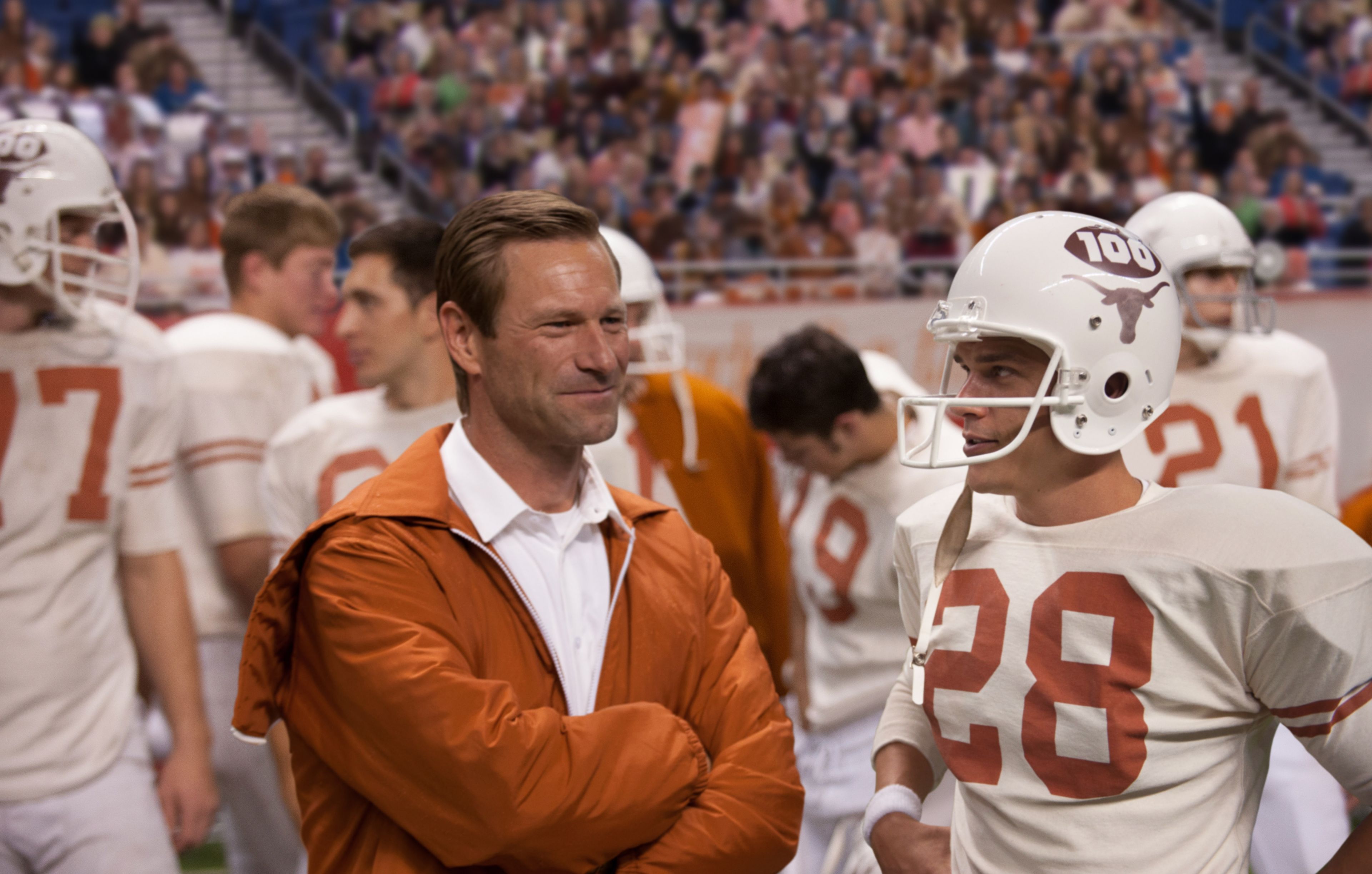 ZIMMERMAN: Like you said, you do have a sort of internal clock, especially with action. I feel if the moment that a shot ceases to pique your interest is the moment when you want to change the dynamic. I’ve found that to be a great first step in cutting an action sequence. In “Die Hard 5” the car crash sequence through Russia was humongous, it was a very long sequence. Thankfully, within the body of it there were different variations of the crashes and how they related to each other that kept your attention. Much like “Scorch Trials,” one of our big challenges was that Wes loved the idea of really long action set pieces. The composer on the film and I would talk constantly and say, “How do we want to deal with this?” because we’ve got this seven minute long action sequence. You can’t just bombastically score it because you’d beat your audience up to the point where they get disengaged. So how do you manipulate it? And I think it truly is having peaks and valleys and dynamics within the action itself, so that it’s not at ten all the time, but even when you’re at four, it’s still engaging.
ZIMMERMAN: Like you said, you do have a sort of internal clock, especially with action. I feel if the moment that a shot ceases to pique your interest is the moment when you want to change the dynamic. I’ve found that to be a great first step in cutting an action sequence. In “Die Hard 5” the car crash sequence through Russia was humongous, it was a very long sequence. Thankfully, within the body of it there were different variations of the crashes and how they related to each other that kept your attention. Much like “Scorch Trials,” one of our big challenges was that Wes loved the idea of really long action set pieces. The composer on the film and I would talk constantly and say, “How do we want to deal with this?” because we’ve got this seven minute long action sequence. You can’t just bombastically score it because you’d beat your audience up to the point where they get disengaged. So how do you manipulate it? And I think it truly is having peaks and valleys and dynamics within the action itself, so that it’s not at ten all the time, but even when you’re at four, it’s still engaging.
HULLFISH: And that’s part of the skill of pacing, right? It’s not that you’re going at an exact, measured pace the whole time, but that you know when to step on the gas and when to let up, so that the audience can either catch their breath or absorb something or whatever and then the pace is going to pick back up again.
 ZIMMERMAN: Absolutely. Look, I would imagine that cutting “Sicario” that is some of the greatest suspense editing done since, for me, probably since “No Country for Old Men” or “Hurt Locker.” Having the confidence to stay within the scene to get that your audience is viscerally feeling it. It’s what you always try to look for. I’m always tapping in to that as a movie buff and as a movie goer and as a movie fan, I’m always trying to think, “Is this cool?” or “Would this affect me?” and more often than not, I try to separate myself from cutting it and watching it. Every film fan or every movie buff that’s out there will always look at something and wonder, “I wonder why they did it like that?” or “I would have done it like this…” and they have an opinion. But the great moments are when they say, “That was awesome and I wouldn’t have changed anything, because then you know you’ve nailed it.” More often than not, if I feel that way after stepping back from it and looking at it – which is the hardest thing to do… I mean, lack of short-term memory in our business is a godsend. If you can forget that you’ve cut something and come in with fresh eyes, that’s exactly what you want.
ZIMMERMAN: Absolutely. Look, I would imagine that cutting “Sicario” that is some of the greatest suspense editing done since, for me, probably since “No Country for Old Men” or “Hurt Locker.” Having the confidence to stay within the scene to get that your audience is viscerally feeling it. It’s what you always try to look for. I’m always tapping in to that as a movie buff and as a movie goer and as a movie fan, I’m always trying to think, “Is this cool?” or “Would this affect me?” and more often than not, I try to separate myself from cutting it and watching it. Every film fan or every movie buff that’s out there will always look at something and wonder, “I wonder why they did it like that?” or “I would have done it like this…” and they have an opinion. But the great moments are when they say, “That was awesome and I wouldn’t have changed anything, because then you know you’ve nailed it.” More often than not, if I feel that way after stepping back from it and looking at it – which is the hardest thing to do… I mean, lack of short-term memory in our business is a godsend. If you can forget that you’ve cut something and come in with fresh eyes, that’s exactly what you want.
HULLFISH: But it’s great to be able to look at something you’ve cut in a detached way… not remembering the reasons for the cuts and all the other stuff and be honest about whether it works or not.
ZIMMERMAN: Totally. I tell everybody, creativity is not a switch you turn on and off. It’s not like we come to work every single day and we can flip the creative switch on. I’ve cut a scene one day where you’re just not feeling it and you come in the next day and you say, “What was I thinking?” and you re-cut it and it’s so much better. One of the things I always do is watch it the next day to make sure that I’m happy with it and if not and time permits fix it or to make a mental note to make it better later.
HULLFISH: Here’s an interesting thought: Watching it with someone else also has a total different chemistry, right?
ZIMMERMAN: Absolutely. One of the greatest experiences of my life was working with my father. (photo of Dan and his father editing) He is truly a teacher’s editor. He has no problem, as long as your work’s done, to sit and watch him work. He often will call me in and watch something that he’s done to get my opinion. He’s always said, from day one, “It doesn’t matter where a good idea comes from. A good idea is a good idea.” And our job is to always be open to those good ideas and try to facilitate them and best suit the storytelling. At the end of the day, we don’t have all the answers, but editing is such a collaborative thing. I’m always calling in my assistants to get their opinions of the cut. I find tremendous value in other opinions especially if it differs from your own. I’m massively collaborative and I love input.
HULLFISH: You talked about being a storyteller. You’re working with a story that’s already written. A story that’s already shot. What real storytelling input do you have as the editor.
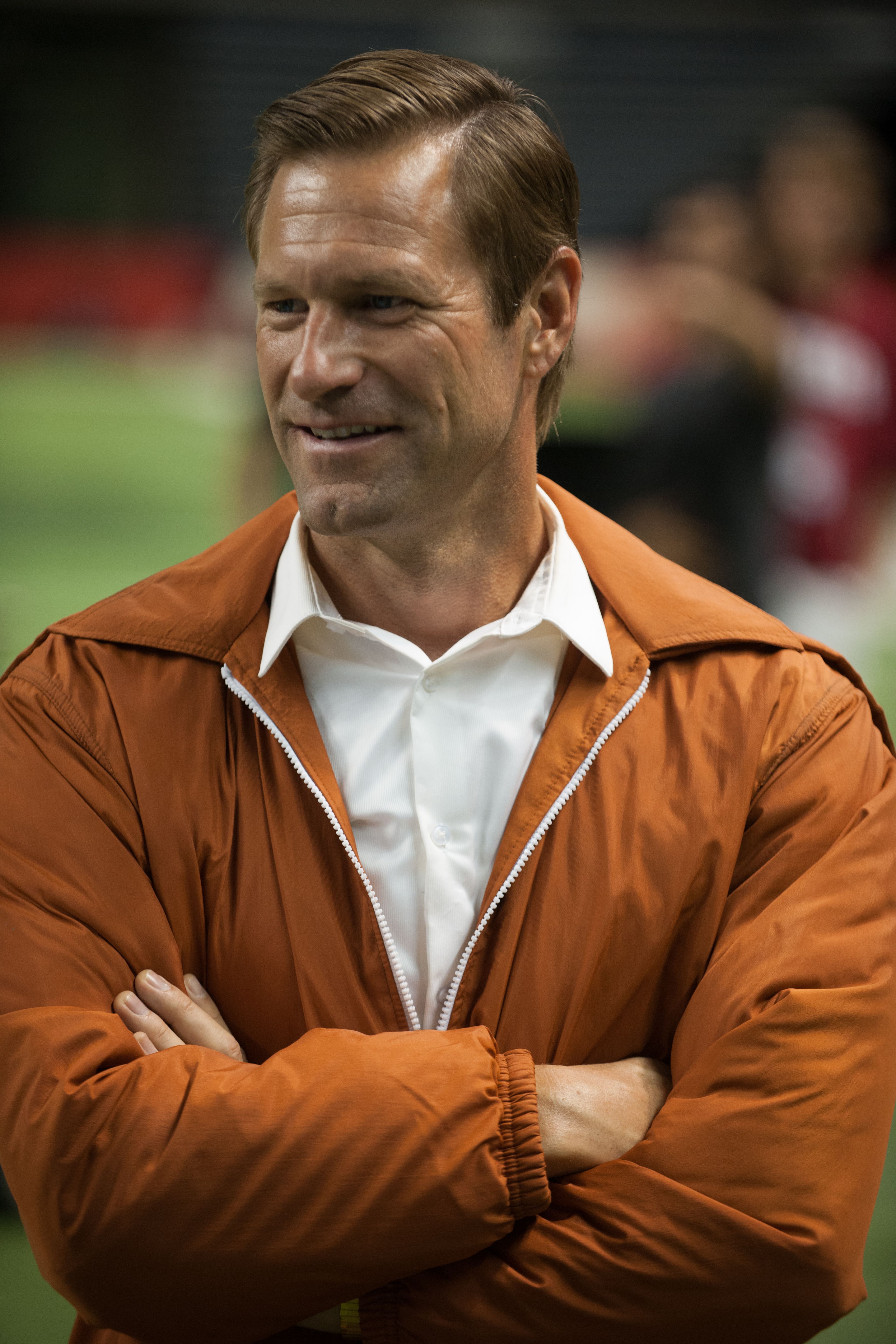 ZIMMERMAN: People will say, “Don’t you have a script to go by? Don’t you just edit to that?” And the answer is, “Yes you do.” But what was in the script is not necessarily representative of what was shot, and what’s shot may not represent what the movie ends up being. Ultimately, editing is your final re-write. So I always feel like everything is used as a guideline. There’s a motivation and a purpose behind it all, but you can only manipulate the footage you have to a certain degree. Those degrees are pretty varied. You can take a movie that was meant to be a comedy and turn it into a dramatic tragedy, depending on the pieces you decide to use. So the swing is big, but at the end of the day you have to rely in the footage you have because you can’t create footage. You have devices like ADR where you can use to patch something in a situation where it wasn’t captured on film, or you want to change the intent in the editing room, or if you have a movie that’s being narrated, you have a lot of flexibility in trying to get the movie to go along a certain story path. This is why I love editing the most because we really are a part of all the facets of the moviemaking process. You’re reading the script and you may or may not have input, but you have your ideas on the script and you’re seeing the footage as it’s being handed off and all of the limitations that come along with it. You know, “We got to the set and we thought we were going to be shooting in a 10,000 square foot location and we ended up shooting in a closet. So how do we make that work?” So there’s all that and it lands on your desk and you have to sort it out. So you have to take the intention of the script, match it with the intention of the performances and the images that you get and ultimately tell that story through editing.
ZIMMERMAN: People will say, “Don’t you have a script to go by? Don’t you just edit to that?” And the answer is, “Yes you do.” But what was in the script is not necessarily representative of what was shot, and what’s shot may not represent what the movie ends up being. Ultimately, editing is your final re-write. So I always feel like everything is used as a guideline. There’s a motivation and a purpose behind it all, but you can only manipulate the footage you have to a certain degree. Those degrees are pretty varied. You can take a movie that was meant to be a comedy and turn it into a dramatic tragedy, depending on the pieces you decide to use. So the swing is big, but at the end of the day you have to rely in the footage you have because you can’t create footage. You have devices like ADR where you can use to patch something in a situation where it wasn’t captured on film, or you want to change the intent in the editing room, or if you have a movie that’s being narrated, you have a lot of flexibility in trying to get the movie to go along a certain story path. This is why I love editing the most because we really are a part of all the facets of the moviemaking process. You’re reading the script and you may or may not have input, but you have your ideas on the script and you’re seeing the footage as it’s being handed off and all of the limitations that come along with it. You know, “We got to the set and we thought we were going to be shooting in a 10,000 square foot location and we ended up shooting in a closet. So how do we make that work?” So there’s all that and it lands on your desk and you have to sort it out. So you have to take the intention of the script, match it with the intention of the performances and the images that you get and ultimately tell that story through editing.
HULLFISH: I’m fascinated with the changes that occur after the script has been written and as it passes through post. And what occurs to me is that the editor is the first person that gets to see the story and experience the story with a continuity of time. The writer doesn’t deal with the experience of the story in time at all. The director deals with time, but is shooting out of continuity. The person that deals with the the story the way the audience will experience it – over time, continuously from beginning to end – is the editor – along with the director, eventually.
ZIMMERMAN: For sure.
HULLFISH: Have you worked on films that had a lot of restructuring done in the edit suite?
ZIMMERMAN: Absolutely. You always want to try to tell the best story. There have been movies I’ve worked with where I read the script and thought what a great movie it will be, then, when you put it together in the way of the script on film, you say, “I see the ending coming from a mile away. We have to fix that.” A visual tells a thousand words and sometimes that gets a little lost on the page and you get lost in it. Taking the intent of what the script was and try to maintain that through the process. So let’s take the climactic part of the third act and put in the beginning of the movie and basically tell it as if it was a flashback. You’re hinting to the audience and getting them engrossed in “This is gonna happen.” and now I’m going to lead you back to HOW it happened. That happens a lot. That may not be how it was written at all. Maybe it was written linearly and you’re completely flipping it on its head because you’re so far ahead of it in that linear format that it becomes predictable or the audience disengages because they know the outcome before it happens. You’re always trying to forego that. I’ve had that happen in many movies that I’ve worked on.
HULLFISH: Can you give me an example? What scene got cut and WHY did it get cut or moved in the structure of the story?
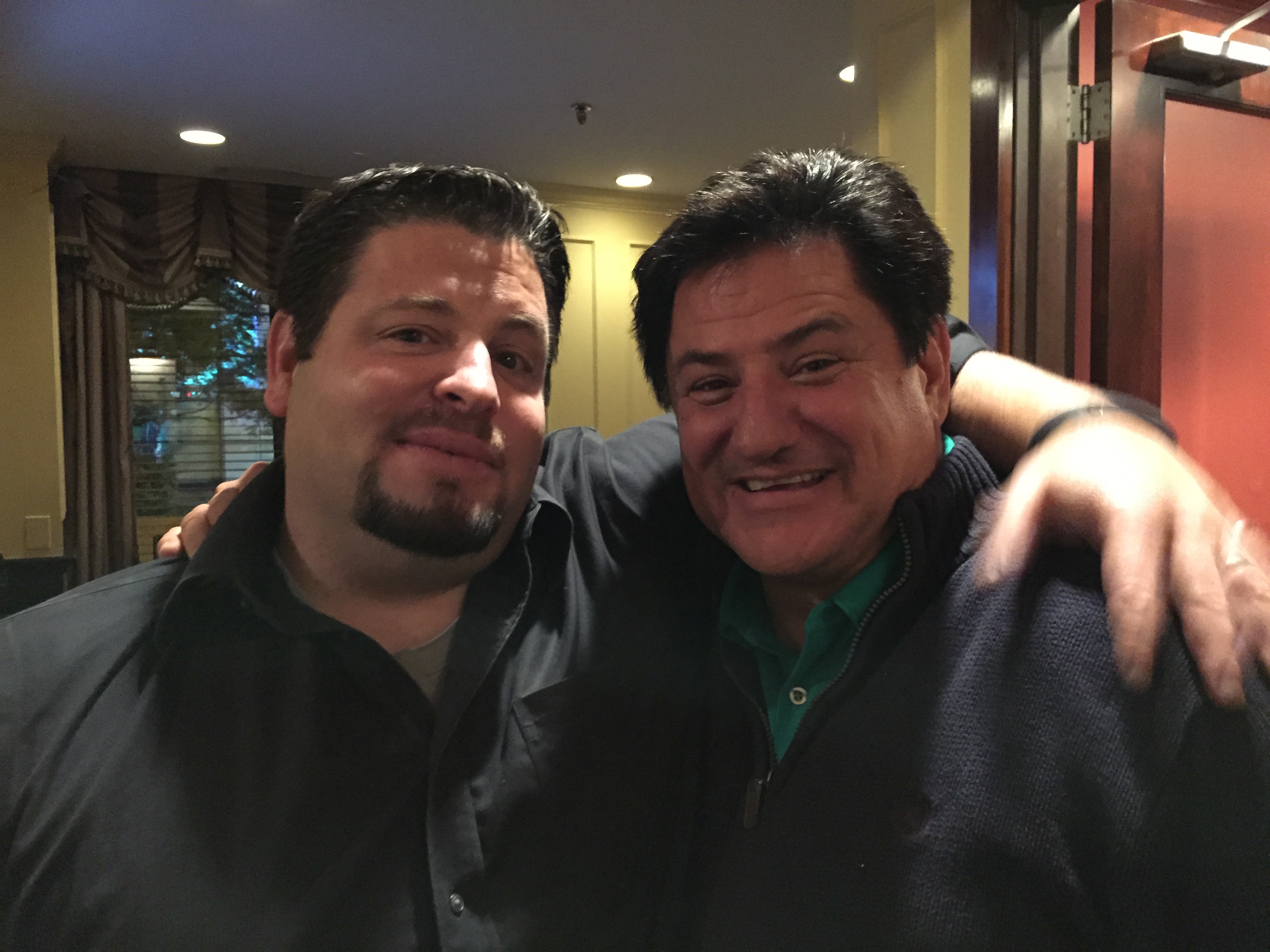 ZIMMERMAN: Yes. There’s a few of examples with “My All American.” The ironic thing is that they were scenes that Angelo and I really loved. It was actually something he added during the shoot. Robin Tunney, who played the mom, says goodbye to her son Freddie (Dan with Freddie’s real life brother, right), when he goes off to college. But the sequence before it is this joyful moment when Freddie and his girlfriend on the hood of his car realize they are both going to Texas and celebrate. It then cuts to the first football Pratice for Freddie as the coach watches from the tower. But in between was this scene of Robin saying goodbye and giving him a rosary. It was a very emotional, intimate and just beautiful scene, but going from the on hood celebration to the rosary scene felt as if it made the story stall. It’s a scene that I’ll forever miss, but it interrupted the trajectory of Freddies story.
ZIMMERMAN: Yes. There’s a few of examples with “My All American.” The ironic thing is that they were scenes that Angelo and I really loved. It was actually something he added during the shoot. Robin Tunney, who played the mom, says goodbye to her son Freddie (Dan with Freddie’s real life brother, right), when he goes off to college. But the sequence before it is this joyful moment when Freddie and his girlfriend on the hood of his car realize they are both going to Texas and celebrate. It then cuts to the first football Pratice for Freddie as the coach watches from the tower. But in between was this scene of Robin saying goodbye and giving him a rosary. It was a very emotional, intimate and just beautiful scene, but going from the on hood celebration to the rosary scene felt as if it made the story stall. It’s a scene that I’ll forever miss, but it interrupted the trajectory of Freddies story.
HULLFISH: And that’s just like our discussion of pacing. So there’s that micro-pacing of a scene, but also the macro pacing of the scene and the overall rhythm of the entire movie, and by sticking the rosary scene in, you’re killing the rhythm of the movie.
ZIMMERMAN: That’s exactly it.
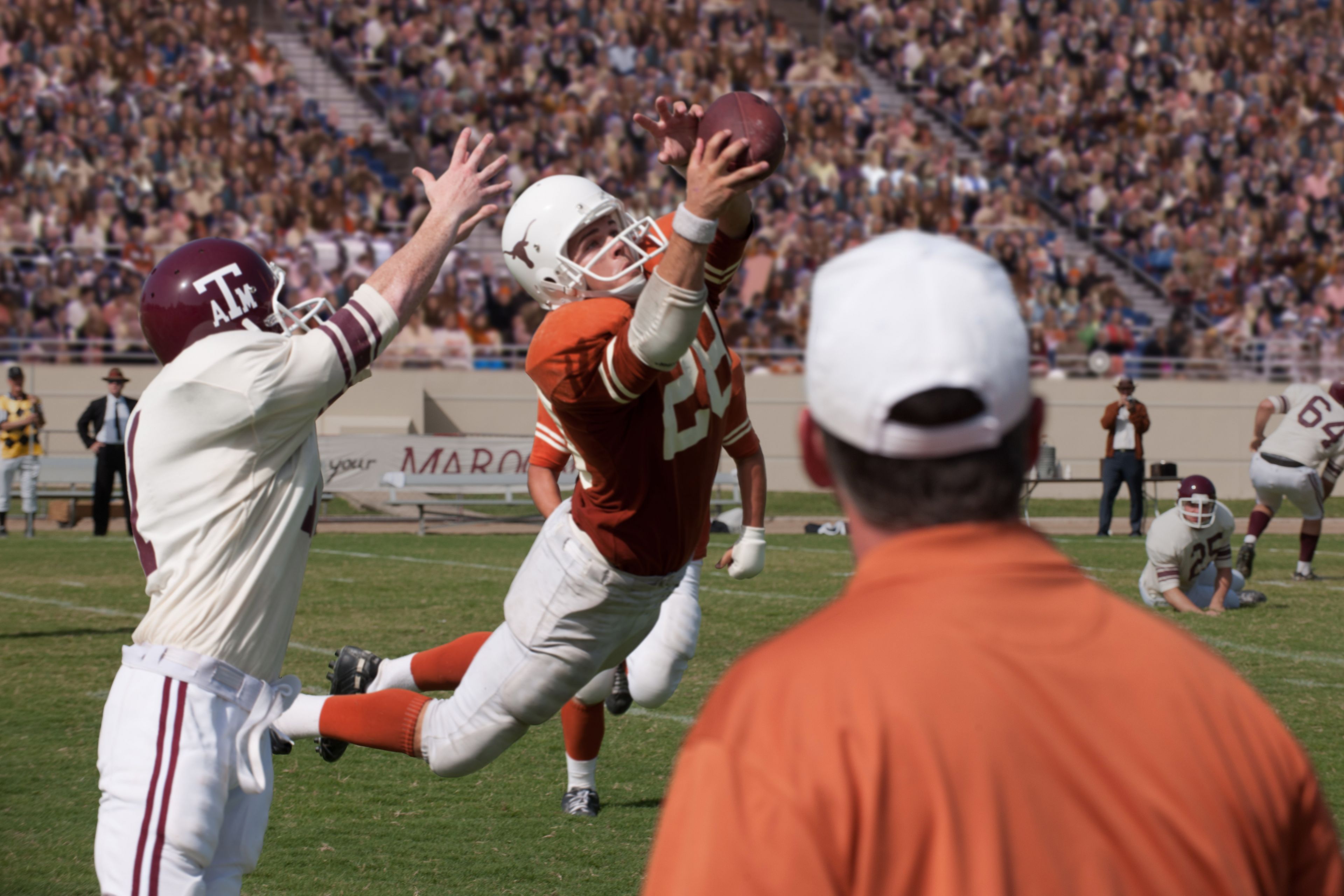 HULLFISH: Can you describe how the film takes shape after the original editor’s assembly? Who watches it? How do the decisions work? How do you collaborate with the director? Who else has a hand in the story at that point?
HULLFISH: Can you describe how the film takes shape after the original editor’s assembly? Who watches it? How do the decisions work? How do you collaborate with the director? Who else has a hand in the story at that point?
ZIMMERMAN: So you have this assembly cut which is everything in the script and that was shot. And then maybe, in my case, you have this cut down version of what I think the movie should be. Then the director has ten weeks – per the DGA – to create the movie that they want to make. You start working with the director. The way I worked with Angelo – and the way I’ve worked with most directors – you start from some scene that they really want to dive in to or you start from the very beginning. Just take reel one and start plugging away. You watch a scene down and the director will either have a strong opinion of whether it should stay or go or whether it should be changed and basically you manage that process for a couple of months. And if you’re doing a studio picture you show it to the studio executives that have developed the project from its infancy. You show it to them and you get their feedback. Again, you can never get a second chance at a first time viewing. Typically the notes that come out of a first time viewing are the most beneficial or that seem to make the most impact. A lot of times, depending on the picture, you take it out to a test audience or you do a friends-and-family screening: sort of showing it within the sanctuary of the collective people working on the film. Or you take it to a public screening. We’ve hired companies that can do research data for you. The audience fills out cards about specific questions that you think they’re going to have issues with or what you’re trying to find out, like what were their favorite scenes or least favorite scenes. Often there are pacing questions, like “Do you think the movie went too fast or too slow? And in what spots did that happen?” Then you way the options. Sometimes the scenes they like the least are scenes that can’t be cut from the movie because of content that’s vital to the story or even personally vital to the director. At the end of the day that director is going to be the person held accountable for what’s on screen and so my job is to make sure that it’s something he can get behind. The editors don’t usually get to do that press, which is why it’s great to have outlets like yourself that do these interviews, because we do have a ton to offer, but a lot of times people think the editor is just the guy that sticks the movie together. It doesn’t encapsulate the importance of editing and editors in the process. It’s definitely one of the reasons why I joined A.C.E.
HULLFISH: It’s great to have A.C.E out there representing the work of the editor. So how does this process wrap up?
ZIMMERMAN: I think Hitchcock said it best: “Movies are never finished. They’re abandoned.” You can cut forever, you really can. But there are deadlines and you have to hit them.
HULLFISH: Let me ask a funny hypothetical question. You talked about the friends-and-family viewing, and I alluded to it earlier that when you watch the movie with someone else it chemically changes your own reaction to it. So now you’re sitting next to your famous editor father watching the movie. How do you see it?
ZIMMERMAN: I don’t watch the movie when I watch it with other people. I watch them.
HULLFISH: AH! I do the same thing. Standing at the side of the theater sometimes watching faces instead of the screen for two hours.
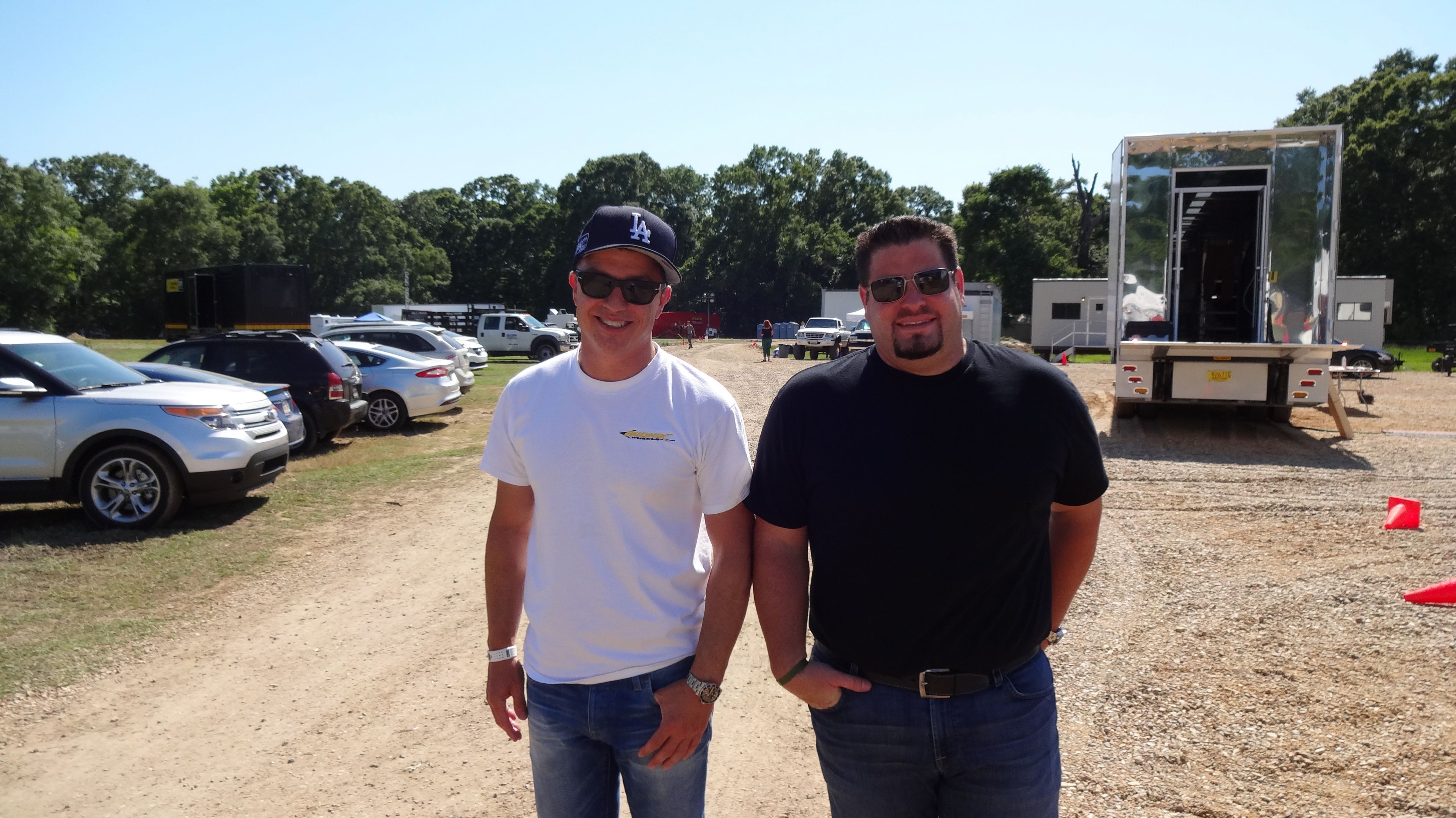
1st Assistant editor, PJ Burch with Zimmerman on the Glade set of “Mazerunner: The Scorch Trials”
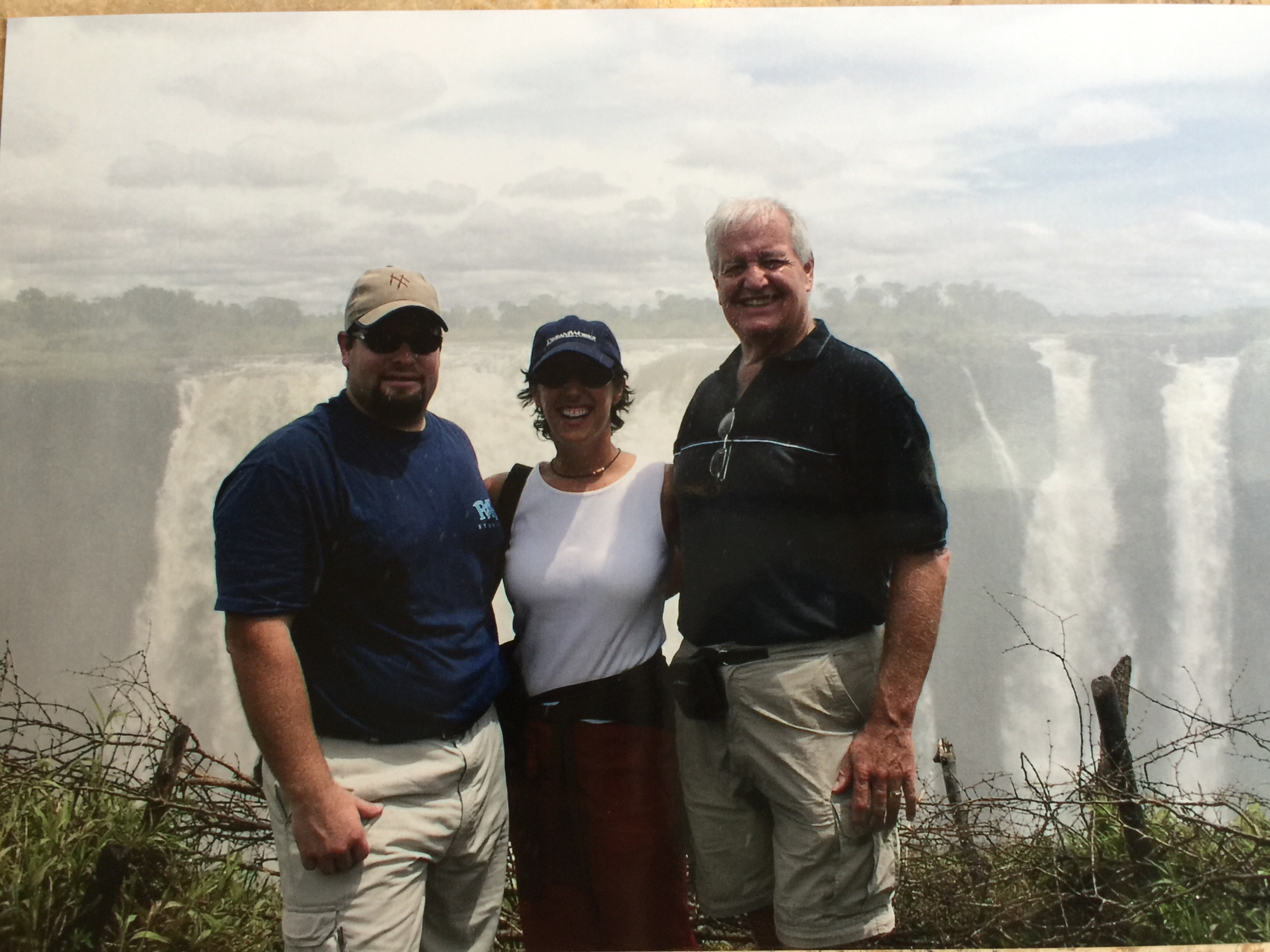 ZIMMERMAN: Absolutely. I’ve actually gone as far as to stand in the exit door hallway – at test screenings – because I can get a clear shot at everyone’s face in the audience and I’m constantly watching how they’re reacting, are they engaged, when do they lean over, when do they get up and leave, or when do they squirm in their seat in a good way, or where do they grab to the person they’re with or whisper “I can’t believe that happened.” I’ve seen the movie more times than anybody is ever going to see the movie. I want to know what they’re feeling and how they’re feeling. As far as my dad, (Zimmerman and his wife with his dad on location in Africa, left) I love watching movies with him and I especially love watching movies that I’ve done with him, because there’s no better feeling of validation or accomplishment than for him to watch one of my movies and have him look at me and say, “Wow, you did a great job.” It might sound like I need that but at the end of the day I am his son and always want to make him proud of me. When you have someone like my dad who doesn’t really judge films that hard because he just really loves movies, there’s always something very comforting about watching with him because he’ll always make me feel like I did the best job I could. Maybe it’s because he knows some of the circumstances I might have been under, because he’s been there. One of the best things about my relationship with my dad is that we are best friends and the fact that I get to call him “Dad” is awesome.
ZIMMERMAN: Absolutely. I’ve actually gone as far as to stand in the exit door hallway – at test screenings – because I can get a clear shot at everyone’s face in the audience and I’m constantly watching how they’re reacting, are they engaged, when do they lean over, when do they get up and leave, or when do they squirm in their seat in a good way, or where do they grab to the person they’re with or whisper “I can’t believe that happened.” I’ve seen the movie more times than anybody is ever going to see the movie. I want to know what they’re feeling and how they’re feeling. As far as my dad, (Zimmerman and his wife with his dad on location in Africa, left) I love watching movies with him and I especially love watching movies that I’ve done with him, because there’s no better feeling of validation or accomplishment than for him to watch one of my movies and have him look at me and say, “Wow, you did a great job.” It might sound like I need that but at the end of the day I am his son and always want to make him proud of me. When you have someone like my dad who doesn’t really judge films that hard because he just really loves movies, there’s always something very comforting about watching with him because he’ll always make me feel like I did the best job I could. Maybe it’s because he knows some of the circumstances I might have been under, because he’s been there. One of the best things about my relationship with my dad is that we are best friends and the fact that I get to call him “Dad” is awesome.
HULLFISH: I’ve had a chance to do a few projects with my dad and they’re great. He’s not an editor but we’ve done some documentaries together. You’ve worked with John Moore multiple times. Why does he keep coming back to you? He had done work with your father.
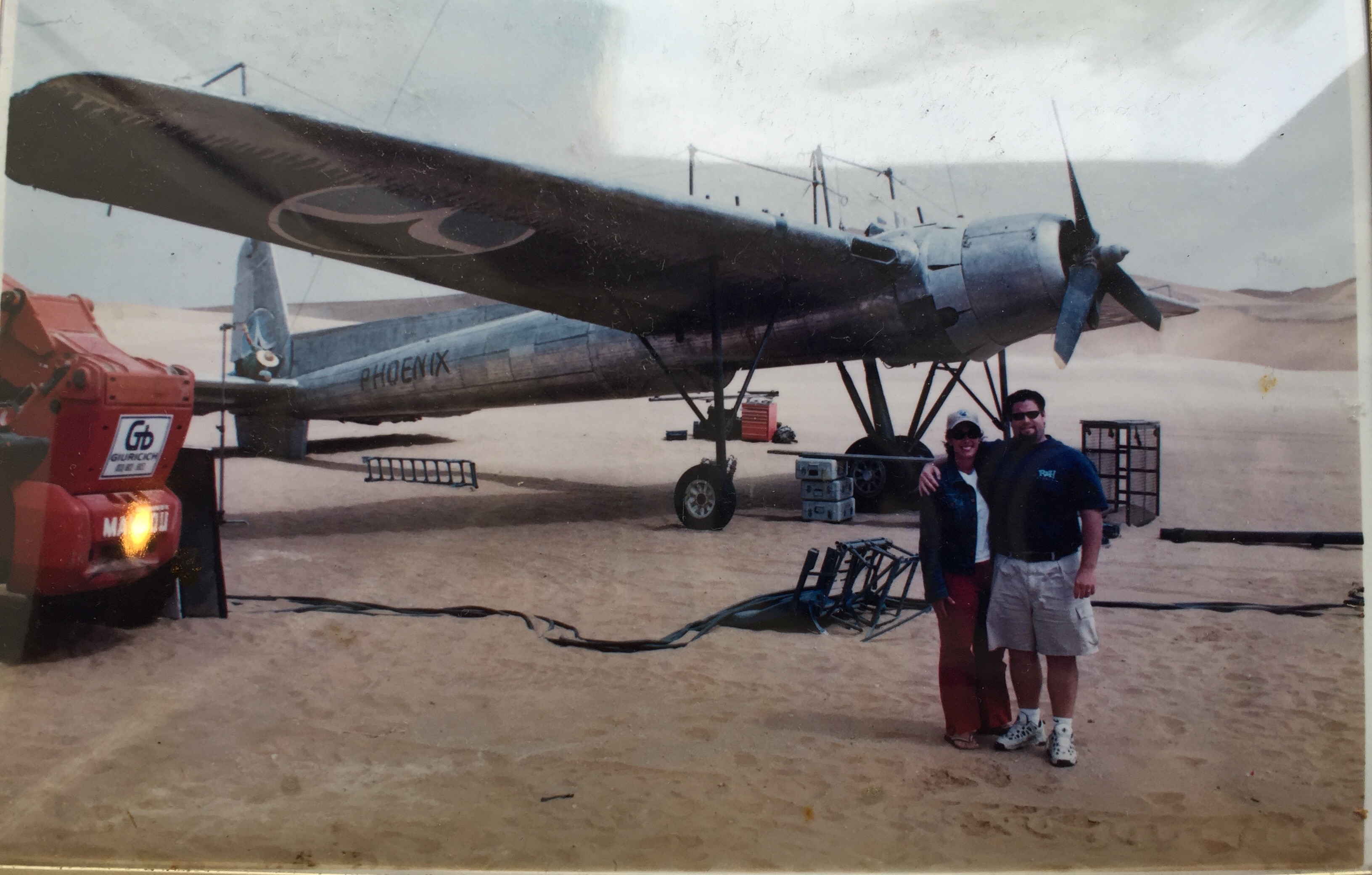 ZIMMERMAN: We first met John when my dad cut his second movie, “Flight of the Phoenix” (Zimmerman on location in Africa with wife, right) and we were in Africa for six months doing that and came back to the States to finish it. On that, I was the visual effects editor and first assistant on that along with my twin brother, Dean. As the film was wrapping up and we were doing the final dubbing, my dad got an offer to do another movie that was supposed to start a few weeks before we were really, truly done with “Flight of the Phoenix,” so my dad and my brother went on to start that movie and I had a few weeks of cutting in the last visual effects that were coming in and making sure that the DI was running smoothly and then wrapping up the cutting room where I got to spend some time with John and he and I had a great rapport and relationship. So in 2005 when John called my dad again to do “The Omen” he really called for my dad, but we were all in the middle of “Fun with Dick and Jane” and there was no way we could be available for “The Omen.” John asked if either my brother or I were ready to cut by themselves. My dad said, “Yes. Either of them is ready.” So John left the decision up to us. I had joined my dad later than my brother did, I automatically assumed that my dad would give that opportunity to my brother. But my brother was engaged and was going to get married that year and “The Omen” was shooting in Prague, so it would have taken him away. So, because of the timing, I found myself accepting the job. I quickly found a replacement for me as the assistant and FX editor on “Fun with Dick and Jane” and John and I started our working friendship together. He’s like a brother. We hug and fight all at the same time. It’s about relationships. That’s why it’s great to get a call to come back from a director you’ve worked with because it means you’ve touched them.
ZIMMERMAN: We first met John when my dad cut his second movie, “Flight of the Phoenix” (Zimmerman on location in Africa with wife, right) and we were in Africa for six months doing that and came back to the States to finish it. On that, I was the visual effects editor and first assistant on that along with my twin brother, Dean. As the film was wrapping up and we were doing the final dubbing, my dad got an offer to do another movie that was supposed to start a few weeks before we were really, truly done with “Flight of the Phoenix,” so my dad and my brother went on to start that movie and I had a few weeks of cutting in the last visual effects that were coming in and making sure that the DI was running smoothly and then wrapping up the cutting room where I got to spend some time with John and he and I had a great rapport and relationship. So in 2005 when John called my dad again to do “The Omen” he really called for my dad, but we were all in the middle of “Fun with Dick and Jane” and there was no way we could be available for “The Omen.” John asked if either my brother or I were ready to cut by themselves. My dad said, “Yes. Either of them is ready.” So John left the decision up to us. I had joined my dad later than my brother did, I automatically assumed that my dad would give that opportunity to my brother. But my brother was engaged and was going to get married that year and “The Omen” was shooting in Prague, so it would have taken him away. So, because of the timing, I found myself accepting the job. I quickly found a replacement for me as the assistant and FX editor on “Fun with Dick and Jane” and John and I started our working friendship together. He’s like a brother. We hug and fight all at the same time. It’s about relationships. That’s why it’s great to get a call to come back from a director you’ve worked with because it means you’ve touched them.
HULLFISH: So much of it is that personal relationship. Not to take anything away from your talent or your dad’s talent or my talent. You spend – as an editor and a director – more time than anybody else, so you’ve got to like that person, because it’s a long commitment. I’m certainly very fond of the directors and producers I’ve worked with.
ZIMMERMAN: By the way, it doesn’t always happen that way. Sometimes by the end of a show you say, “I could never do that again. It almost killed me.” My wife always jokes that I have my family at home and then I have my family at work. She says, “We’ve been married for eleven years, but I’ve seen you for four of them collectively.” You spend 12, 13, 14 hours a day in a cutting room with other people, seven or eight months at a time and you get to know them really well.
HULLFISH: So give me the basic timetable of your last three movies, since they kind of intertwined.
ZIMMERMAN: Well, “Mazerunner” started in May or June. We shot for 45ish days I think, and basically that breaks down to nine weeks, since we were working five day weeks. We shot in Baton Rouge, Louisiana. Ended up coming straight back to FOX. Wes takes about a week off to clear his head, which gives me time to get my edit and assemble together. I show it to him. And for the next ten weeks, we cut. At the time we had a release date of President’s Day of 2014, so that would be February. So we were in a time crunch. By September or October we showed the studio, and to make that date, we would have had to be done before Christmas, which is what we were shooting for and there were so many visual effects. But when we showed the studio, I think they were amazed on how big they thought the movie was they decided to shift the release date a bit, giving you more time to develop the visual effects and they pushed it to September, which gave us more time, but of course that doesn’t really mean you have six more months.
HULLFISH: Plus you’ve basically got to lock picture before the VFX get handed off.
ZIMMERMAN: Exactly. However lock picture is the goal but nowadays people don’t lock picture until it’s literally in the theater.
maze-runner-the-scorch-trials-MazeRunnerTST_EPK_DOM_TlrB_Stereo_h264_sd from Steve Hullfish on Vimeo.
HULLFISH: OK, so when did you finish the creative edit on “Maze Runner” that you started basically the beginning of June.
ZIMMERMAN: Basically between Thanksgiving and Christmas. During all that time, sound crews and visual effects were working, so after that point of locking, you’ve got a couple weeks for sound to get conformed up to the picture. And during the whole editing process you’re doing ADR …
HULLFISH: There are VFX hand-offs and you’re getting temps back…
ZIMMERMAN: We finished the cut of “Maze Runner” in the later part of February or early March. Then in April I did the “American Odyssey” pilot (for Peter Horton, who also directed the “Ironside” pilot I had cut for him). Then right after that I went straight on to “My All American” on May 5th. That shot for 40 days… eight weeks. They shot in Austin. I cut in California. They came back to California and it came together very quickly. Angelo was pretty happy with it. There was so much football with “My All American.” I think that collectively, my rough assembly has almost an hour and a half of pure football action. They did a lot of plays. They re-enacted, very accurately, a lot of the games. Because you’re telling a story that really happened, you want to make it as realistic as possible. There was a lot of detail spent on football. That was one of the biggest challenges on “My All American” was how to make the football integral to the story but not make it a football movie and more about this true, inspirational kid. So when we came up with this montage style of cutting the football, it really honed it in a little bit. It allowed us to highlight some of the really important aspects of the games and the plays that needed to be told, but we could get through seasons of football very quickly. We did two previews. One in Charlotte, NC and one in Orange County. When we showed it to an audience, we truly believed that we had something as special as we thought we did because our scores were almost perfect. People seemed to respond massively positively to the movie. So we knew we had something that people would love to see. Then we hired a composer and got the job done. Then I jumped right onto “Scorch Trials.” I finished “My All American” on 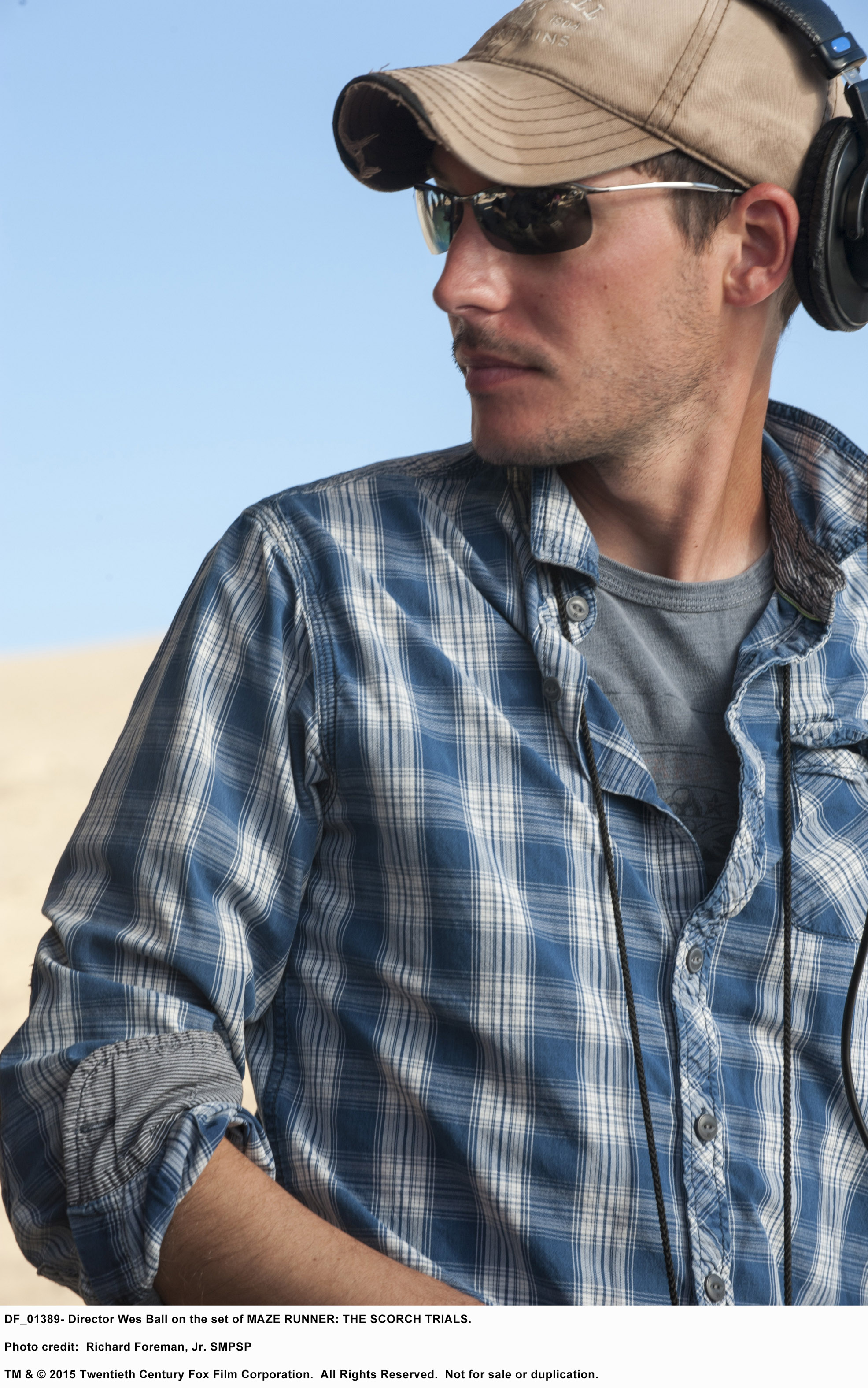 December 15th and was in Albuquerque for “Scorch Trials” on December 16th. “Scorch Trials” started shooting in November, so I actually had to have someone take my place for the first few weeks, and what better person to take my place than my father. So I actually asked my dad, who was in between shows at the time, if he could fill in for me until I can get there in the middle of December and he said “It would be my pleasure.” He had met Wes (pictured right) before and really liked him, so he went to Albuquerque and spent a good six weeks there getting the assemble done on the first six weeks of “Scorch Trials” and in the meantime, I would keep up at night and watch the dailies from “Scorch Trials” while I was cutting “My All American.” Then I got there December 16th. I stayed until the middle of February. I came back and we did our post process which was a little tighter than the first one. So we had to kick it into gear and because we were being released internationally three weeks earlier than domestically we needed to have it done a month before that. So we really had to be done in August. That’s the schedule.
December 15th and was in Albuquerque for “Scorch Trials” on December 16th. “Scorch Trials” started shooting in November, so I actually had to have someone take my place for the first few weeks, and what better person to take my place than my father. So I actually asked my dad, who was in between shows at the time, if he could fill in for me until I can get there in the middle of December and he said “It would be my pleasure.” He had met Wes (pictured right) before and really liked him, so he went to Albuquerque and spent a good six weeks there getting the assemble done on the first six weeks of “Scorch Trials” and in the meantime, I would keep up at night and watch the dailies from “Scorch Trials” while I was cutting “My All American.” Then I got there December 16th. I stayed until the middle of February. I came back and we did our post process which was a little tighter than the first one. So we had to kick it into gear and because we were being released internationally three weeks earlier than domestically we needed to have it done a month before that. So we really had to be done in August. That’s the schedule.
HULLFISH: So did your dad get a credit on “Maze Runner: The Scorch Trials?”
ZIMMERMAN: Yes he did. He’s on as additional editor. He didn’t really want one, but I didn’t want to discredit all the great work that he did. That was the first credit that he and I shared as editors together.
HULLFISH: And that’s pretty funny that on the first movie you share a credit, you’re the lead editor.
ZIMMERMAN: When I worked for my dad as an assistant, I cut some scenes together myself and my dad always asked me if I wanted a credit and I always said no. He asked my why and I said, “Because when someone hires Don Zimmerman as the editor, they want Don Zimmerman and they don’t need anybody else.” I never wanted to take a credit with my dad because it was more of a respect thing than anything. But we laughed about it.
HULLFISH: Dan, it was great to talk to you. Good luck with your future projects. It sounds like the Zimmerman name will live on for quite a while in Hollywood.
ZIMMERMAN: I hope so… It was really fun talking to you. Thanks for the opportunity.
To read more discussions with editors in my Art of the Cut series, check out this link and follow me on Twitter @stevehullfish

Filmtools
Filmmakers go-to destination for pre-production, production & post production equipment!
Shop Now